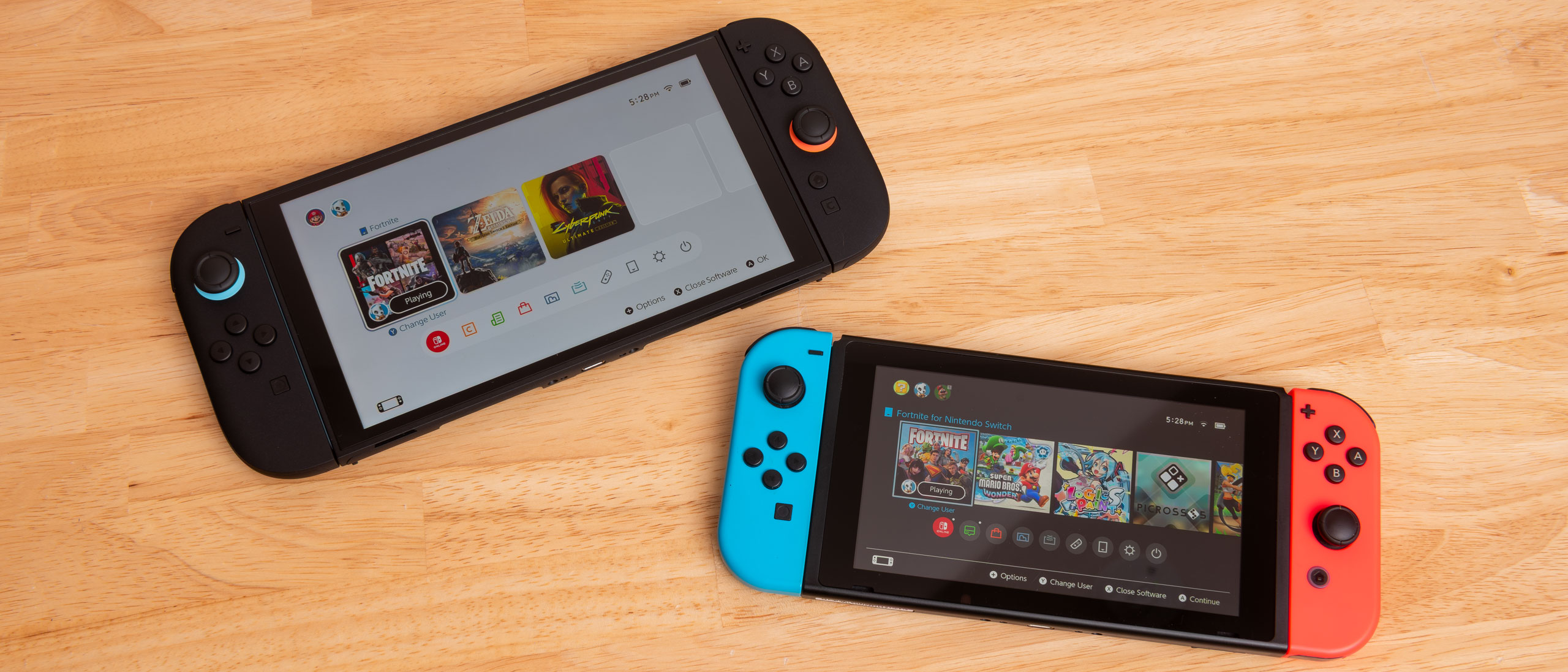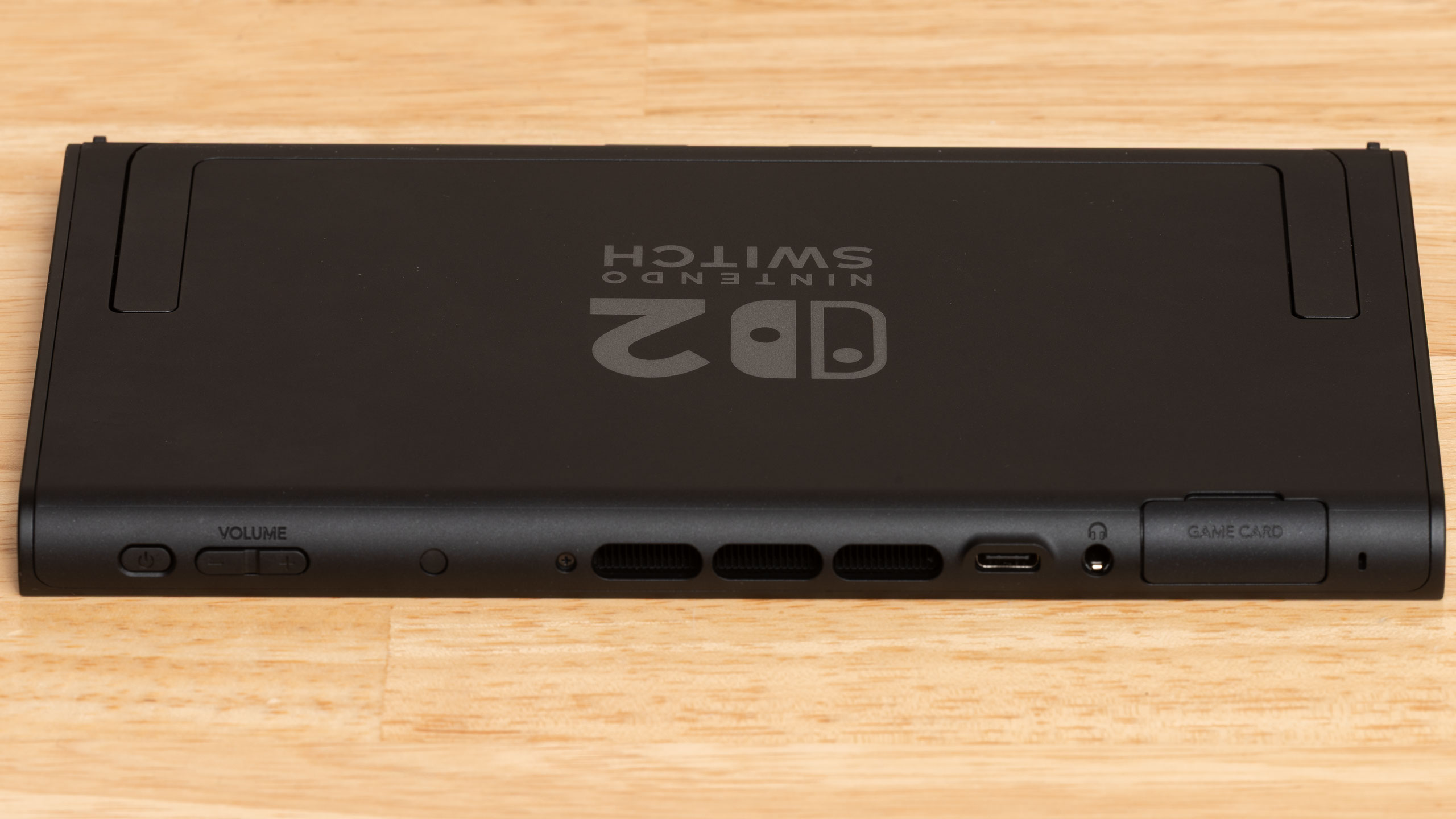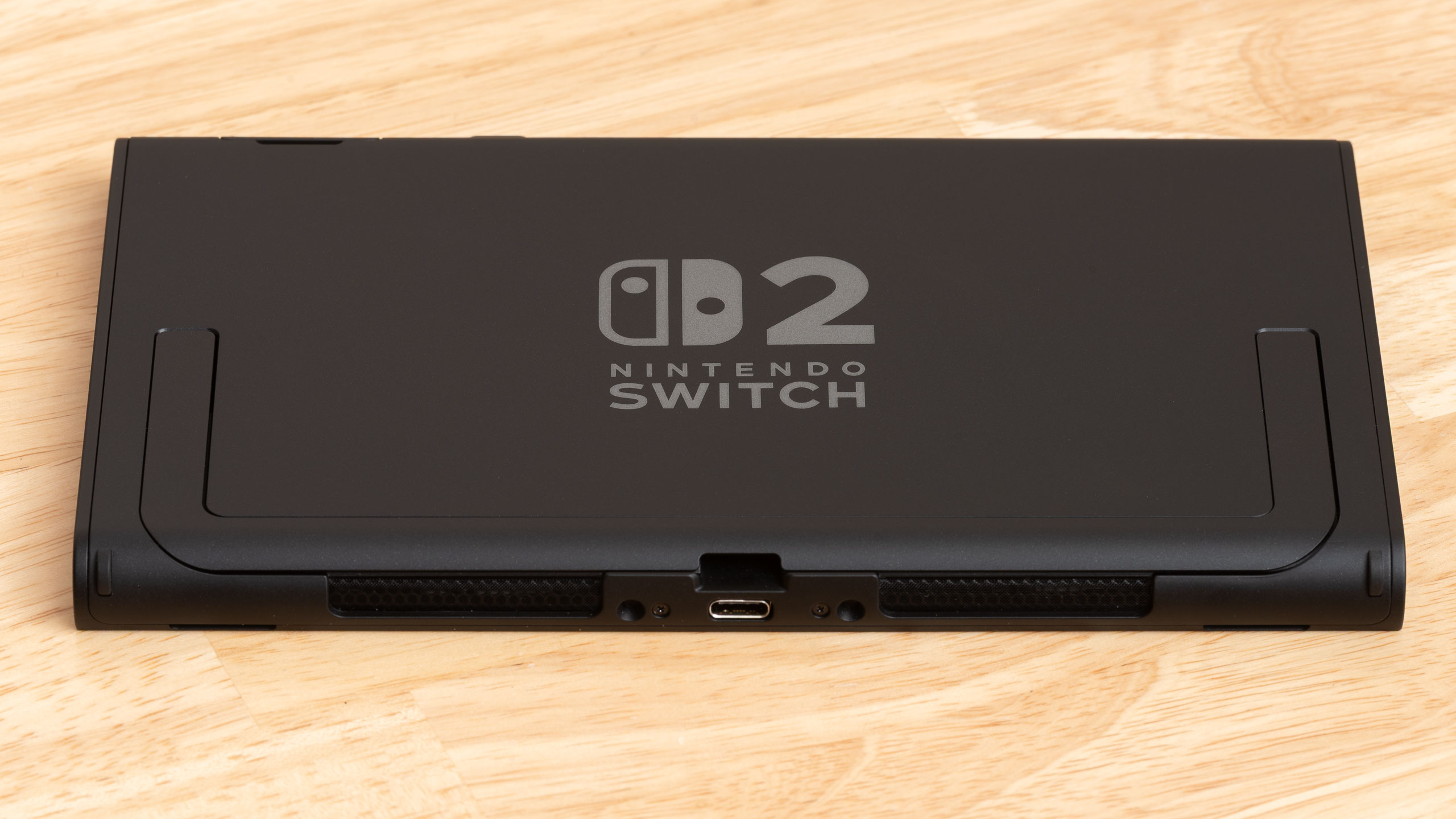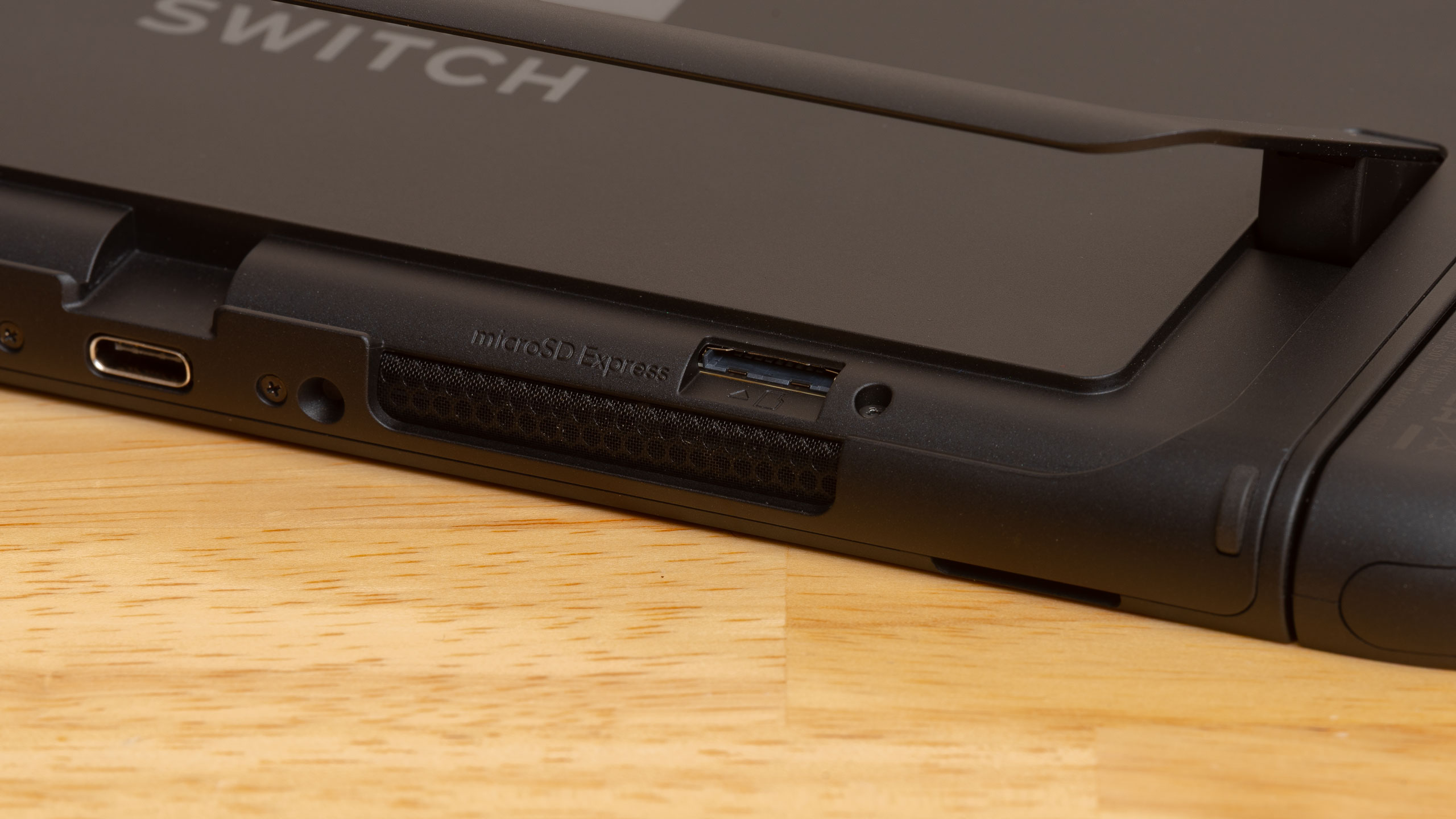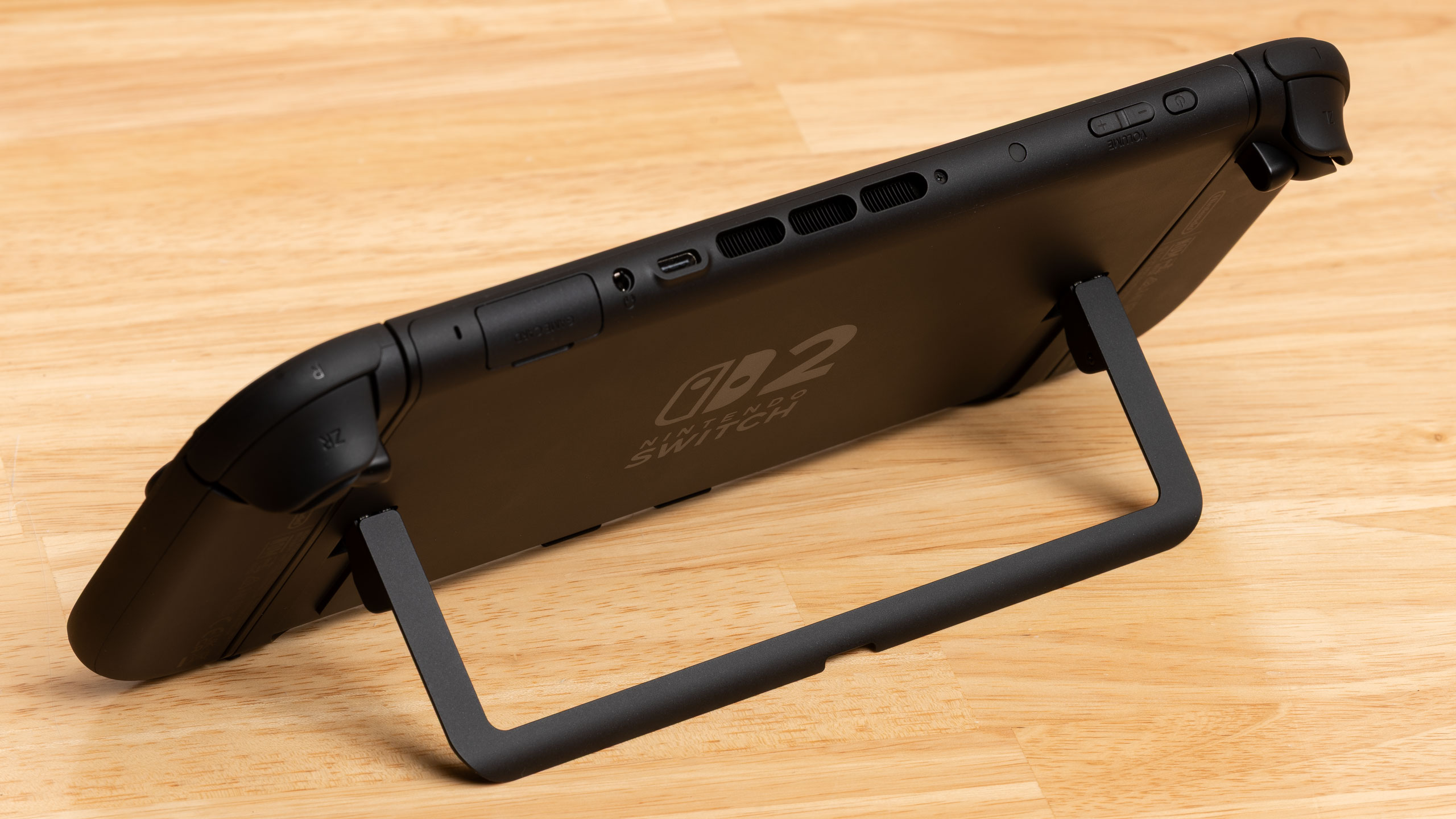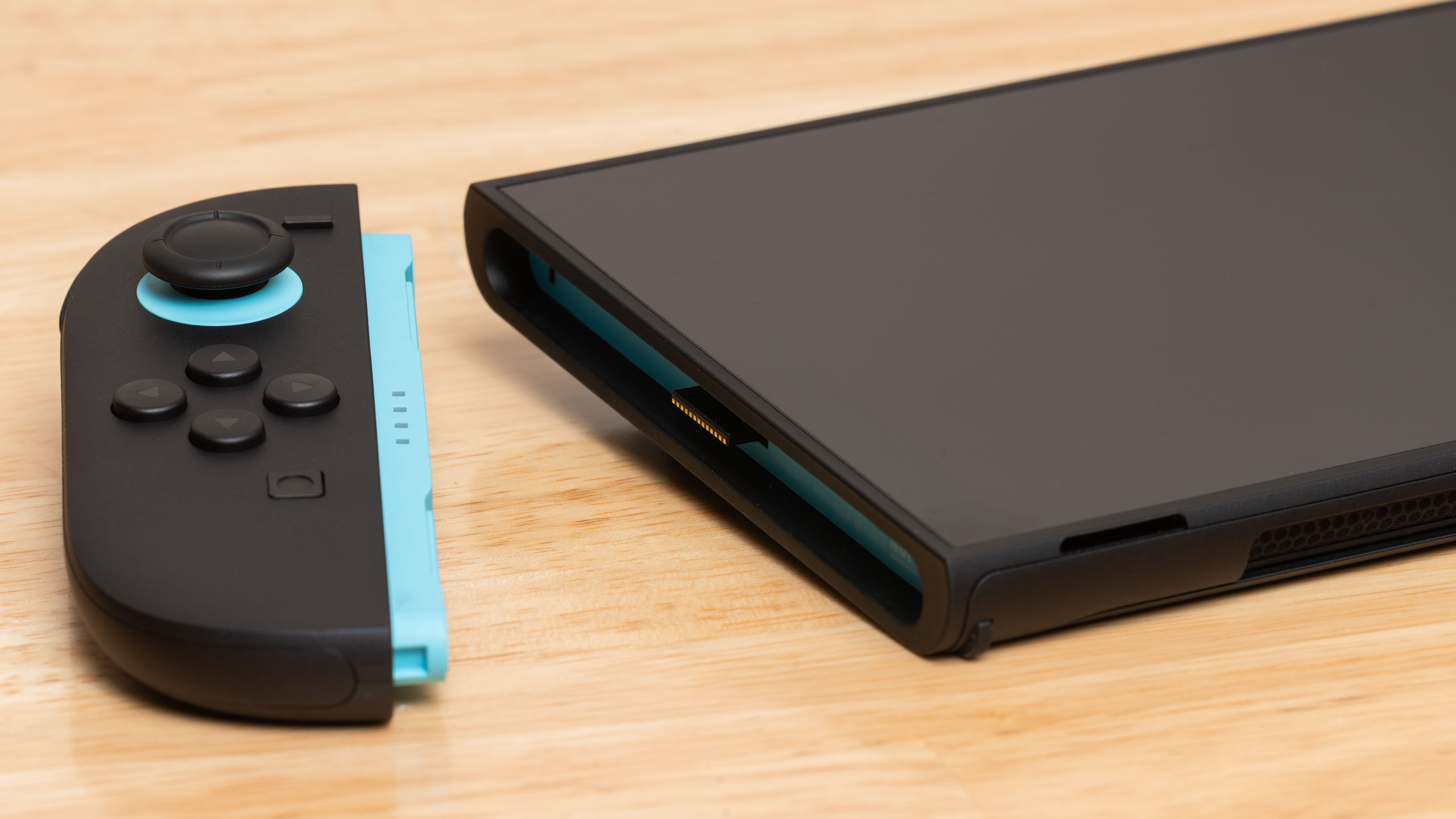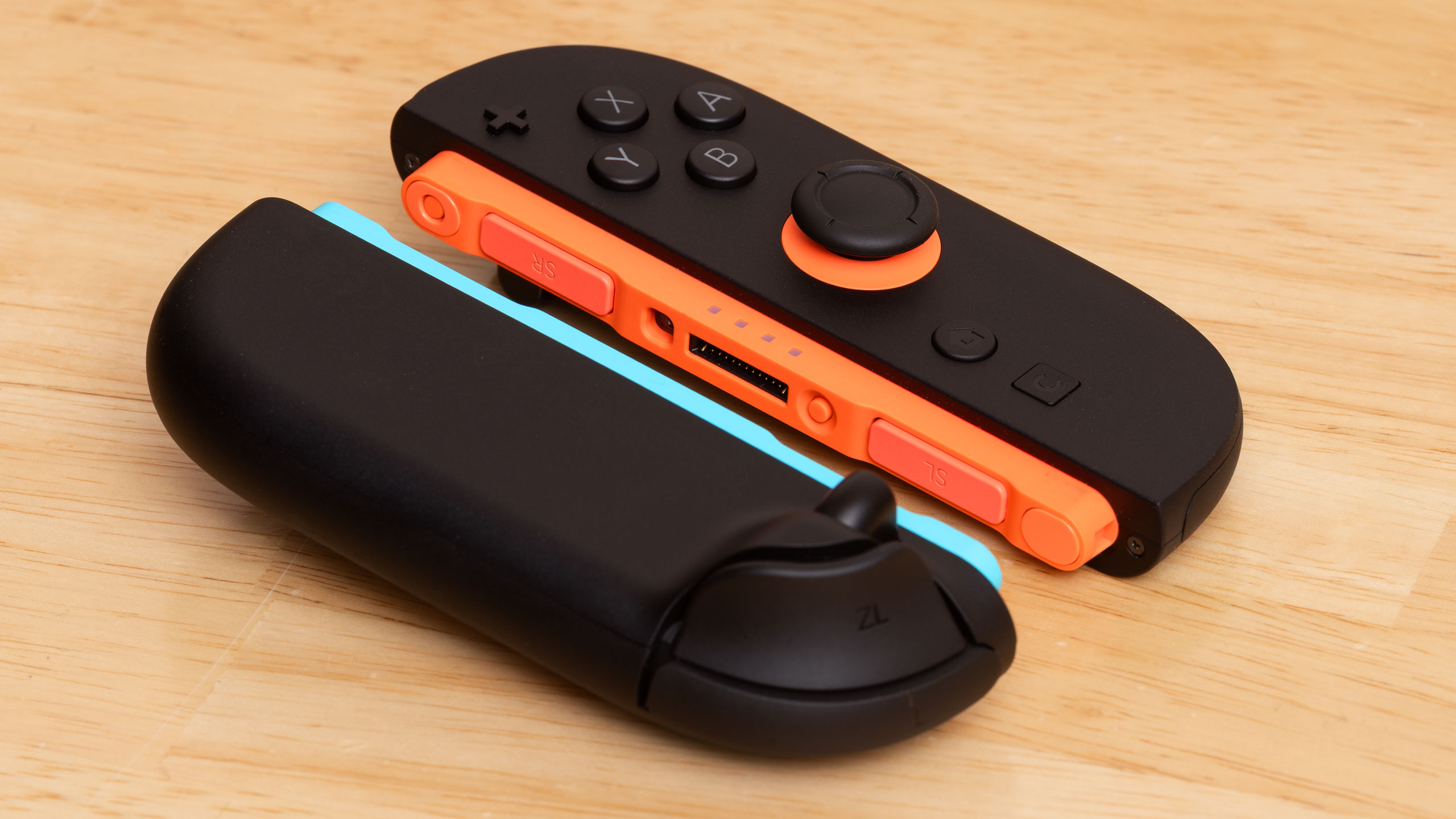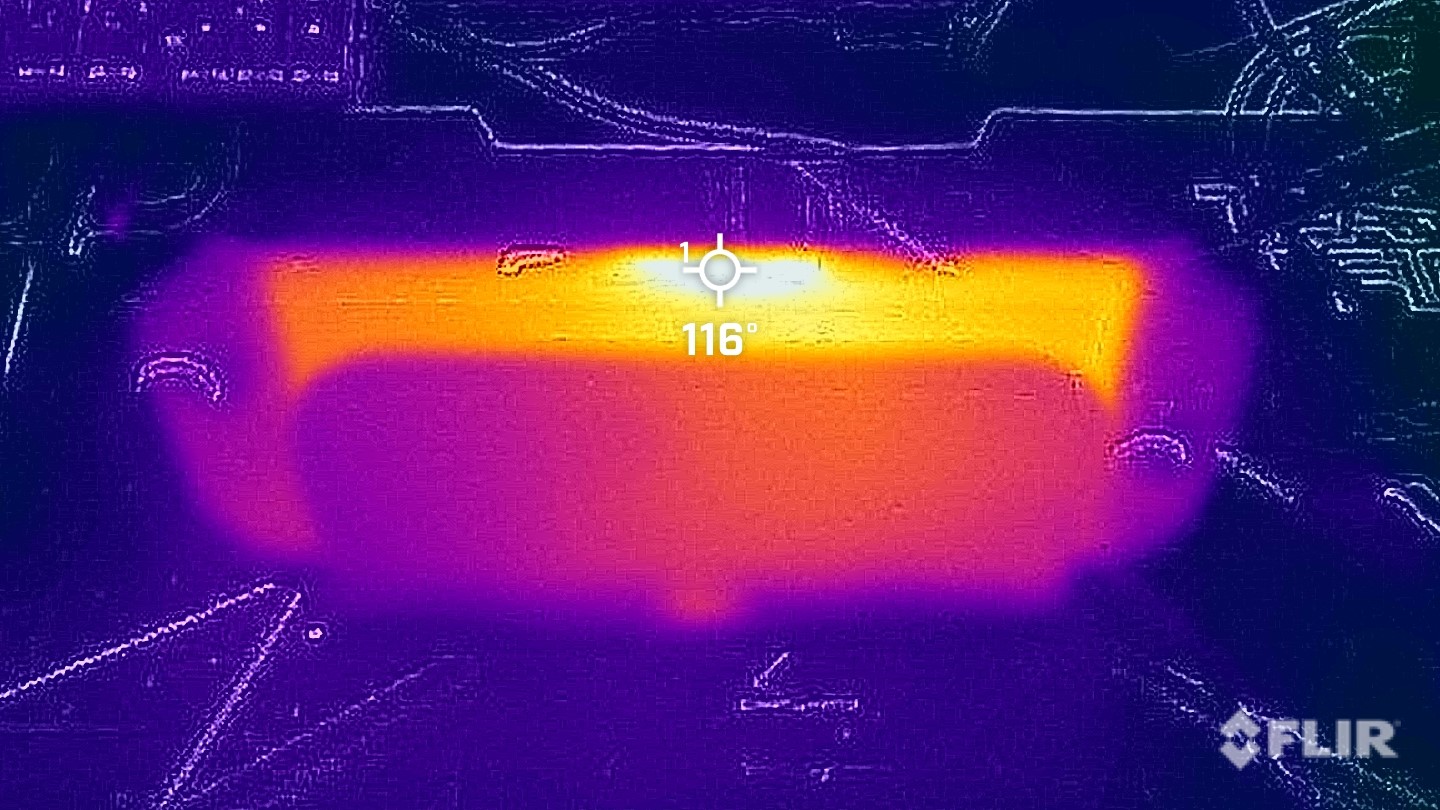Tom's Hardware Verdict
Nintendo's Switch 2 brings more powerful internals and a bigger, brighter screen to the Switch formula for a more fun and fluid gaming experience anywhere. Battery life is a bit on the short side, though, and the drift-prone joystick sensors of the first Switch remain.
Pros
- +
Massive boost for graphics and performance
- +
Big, sharp, vivid VRR screen
- +
Runs cool and quiet
- +
Works fine with most existing peripherals
- +
Goes anywhere
Cons
- -
Battery life is just OK
- -
Internal storage fills up quickly
- -
Pokey data transfer speeds
- -
No VRR over HDMI (yet)
- -
Joysticks could drift with age
Why you can trust Tom's Hardware
6/17/2025: We've updated this article with a rating for the Nintendo Switch 2.
In semiconductors, power is everything. If you can build around a low-power, high-performance chip, magic can happen. Engineers can use smaller or even passive thermal designs in smaller and lighter chassis, enabling portable devices with long battery life.
As its competitors pursued ever-larger power and thermal envelopes, Nintendo tried something different. It took a version of Nvidia's tiny, low-power Tegra X1 SoC and used it as the heart of the first Switch. 150 million units later, the rest is history. Now its successor, the Nintendo Switch 2, is here to try and run it back with a more powerful chip, a bigger, brighter, and more colorful VRR display, bigger Joy-Cons, a second USB Type-C port, and way more.
I primarily game on my PC, but my husband is a Nintendo kid through and through, so one of its consoles has always lived under our TV. I never loved our Switch as a portable device, but despite its flaws, it was the only ticket to some truly magical worlds. I still remember the awe I felt when I emerged from the first cave in The Legend of Zelda: Breath of the Wild and saw Hyrule laid out before me, sun dazzling my eyes.
Nintendo and its partners did heroic work squeezing every last drop of performance they could from the first Switch's modest hardware over the past eight years, and creativity can still thrive within constraints. Even so, the march of time has clearly caught up.
Pokémon Scarlet and Violet had even the most dedicated trainers complaining about performance. The Legend of Zelda: Tears of the Kingdom was so ambitious that it almost felt like a launch title for a console that didn't exist yet. And Fortnite on the Switch is possibly one of the least fun ways to play that title anywhere. More powerful hardware was clearly needed, and now we have it.
If the Switch 2 follows in the footsteps of its predecessor, hundreds of millions of them will be part of the future of gaming. We went out and bought one at retail and spent the past few days getting elbow-deep in (most) everything it can do to see what that future might look like.
In most ways, the Switch 2 refines and elevates the winning formula that its predecessor established, but some curious design decisions and missing features have us scratching our heads.
Get Tom's Hardware's best news and in-depth reviews, straight to your inbox.
Digging into the Switch 2's guts
Nintendo and Nvidia teamed up again to create the chip at the heart of the Switch 2, but this time around, it’s a tailor-made SoC rather than an off-the-shelf part. The two companies are mum on the exact architecture and resources of the Switch 2’s SoC, but the fine folks at Digital Foundry have an inside line on the detailed spec sheet, and community analysis of the actual silicon through decapping lines up.
DF says the Switch 2’s SoC includes a CPU complex of eight Arm Cortex-A78C CPU cores, a design hailing from 2020. It’s hard to nail down public benchmarks of the A78 core in isolation, but the Samsung Galaxy S21 family uses the related Cortex-X1 big core in models with Exynos SoCs, and those devices tend to turn in around 1,000 points in the Geekbench 6 single-threaded benchmark. That’s with roughly 3 GHz clocks, though — far higher than the 1 GHz or so that Digital Foundry claims the Switch’s CPU complex runs at when docked.
Boil all that down, and we’re looking at quite modest single- and multi-threaded performance compared to even the latest phones, to say nothing of laptops or desktops.
That complex shares the die with an Nvidia Ampere GPU with a claimed 1,536 CUDA cores, or the equivalent of one Graphics Processing Cluster (GPC) in Nvidia parlance. For perspective, even the smallest PC implementation of Ampere, GA107, included two GPCs.
The Switch 2 GPU doesn’t have any direct PC equivalents, but its raw specs suggest something with a power level closer to a modern iGPU than even the lowliest discrete chips. DF’s inside info rates the Switch 2 GPU for 3.072 TFLOPS of raw power when docked or 1.7 TFLOPS when in portable mode. For perspective, the leading mobile iGPUs these days have a theoretical peak performance of 4+ TFLOPS.
Last in the memory hierarchy, DF says the Switch 2 has 12GB of LPDDR5X RAM on board, of which 9GB is available to game developers. It’s rated for 102 GB/s of bandwidth in docked mode or 68 GB/s when mobile. The first Switch only had 4GB of RAM, and even less was available to developers, so this is a massive boost.
Raw teraflops and bandwidth numbers are just a way to understand the ballpark we’re playing in. Precise details of the on-die and system-level interconnects on the Switch 2 remain a mystery, leaving us without a complete picture of how data can move around the system. It’s also easier to optimize the entire hardware-software stack on a fixed hardware spec compared to the vast, highly heterogeneous PC platform.
We don't have a power rating for the SoC alone, but Nintendo rates the entire Switch 2 for 19 W of power draw in docked mode and doesn't disclose a figure for handheld operation. It's important to be aware of this tight power envelope as we discuss the system's performance.
Just to check, we plugged the Switch 2 into our power meter and confirmed that it indeed draws between 18 and 19 W in docked mode while running a game and about 11 to 12 W in portable mode under the same workload. We'll see how that shakes out for battery life in our continued testing.
Display tech
The Switch 2’s 7.9-inch, 1920 x 1080 LCD screen is a massive improvement over the original. It's bigger, brighter, crisper, and more vibrant than the murky, blocky panel on the first Switch (although potential upgraders coming from a Switch OLED may be less impressed). I can easily make out tiny text and other fine UI elements on the Switch 2 that made me squint when trying to play on its predecessor. Pixel response times look pretty average for an LCD. I’ve seen better, but I’ve also seen much worse.
Nintendo claims HDR10 support for the internal display in its spec list, but this doesn't appear to be an HDR display in the truest sense. It's a good old global-backlight LCD, not an OLED or full-array local dimming LCD with more granular brightness control.
As with the many PC monitors that claim this mantle but can't really deliver, the Switch 2's internal display might be able to map HDR10 signals into its limited dynamic range, but you shouldn't expect the piercing highlights and bottomless blacks of a true HDR display.
Even so, the Switch 2 display is plenty contrasty. The neon glare and harsh streetlights of Night City in Cyberpunk 2077 will make you squint a little at, well, night. And when the sun comes up over the Fortnite island, it dazzles as it shines through the trees on the current map.
The panel's wide color gamut is also immediately obvious. The reds, greens, and blues of Mario and Luigi's outfits and really pop off the screen in Mario Kart World. Rainbow item boxes look riotously colorful against the already lush tracks.
Nintendo also made two other huge improvements to the screen. One, it has a maximum refresh rate of 120 Hz, and two, it supports variable refresh rate (VRR) operation. Variable refresh rate syncs the monitor's updates to the game's frame rate, and it blends the tear-free frame delivery of Vsync with the low input lag of uncapped frame rates.
Even though the Switch 2 has a 120 Hz panel and VRR, those features should be understood as additional tools that developers will have in their toolbox rather than perks that you'll always see. For example, Epic claims that the Switch 2 version of Fortnite is targeting 60 FPS rather than allowing an uncapped frame rate, which we would need to take full advantage of VRR.
Even with those caveats, VRR would theoretically prevent the whiplash-inducing drops to 30 FPS or below that traditional Vsync requires when a game can’t meet a 60 FPS target, so it’s much better to have it than not.
There’s one baffling catch: VRR only works on the Switch 2’s built-in display for now, not external monitors or TVs through the included dock. The PlayStation 5 and Xbox Series X both support VRR on TVs and external monitors, so it’s not clear what’s standing in Nintendo’s way here.
This panel has touch input for situations like using the on-screen keyboard, but it lacks tap-to-wake like you’ll find on many modern devices. The power button and the Home button on the right Joy-Con are the only ways to wake the system.
Touring the Switch 2 from top to bottom
On the top edge of the Switch 2, we find the power button, volume rocker, what looks like an ambient light sensor for the display’s auto-brightness control, and the three vents for the Switch 2’s active cooling module. There’s also a USB Type-C port and the slot for Switch 2 game cartridges.
I appreciate the addition of a top USB-C port, as it allows for easier charging while playing in portable mode than the bottom port does. It’s nicer to play without having a cord in your lap and also makes charging the console possible when using the kickstand.
On the bottom edge, we see the Switch 2’s stereo speakers and its other USB-C port. The microSD Express slot hides under the kickstand.
The speakers get the job done, but they won’t blow your hair back. The dramatic startup music of Fortnite sounds a bit compressed on these. Treble is a bit tinny and bass lacks punch. If you don’t have a pair of Bluetooth buds for use on the go, though, the speakers are certainly good enough to let you get into the game.
The kickstand is integral to the play-how-you-want ethos of the Switch 2, and unlike the flimsy, tiny one on the first Switch, whose design and construction both felt like afterthoughts, the full-width metal stand built into the Switch 2 works and feels great. It's easy to adjust over a wide range of positions, even all the way back for a comfy angle on a tray table or lap, and it doesn't sag over time. I'll want to see how this mechanism holds up with use, but it's rock-solid for now.
New and improved Joy-Cons; play styles and ergonomics
The Switch 2's redesigned Joy-Con 2 controllers click in with a new magnetic attachment system. You only need to bring each Joy-Con 2 close to the side of the Switch 2 for it to snap back into place, and a release lever next to each trigger pops it back off. No more fiddling with aligning a rail and sliding the controllers in like on the first Switch.
This new attachment system feels plenty solid. There is some wobble if you grab one Joy-Con, turn the Switch 2 on one end, and flop the whole thing back and forth, but the magnetic mechanism never popped loose even under that unusual dynamic stress. When it's all clicked together, it's secure.
All the buttons across the faces of the Joy-Con 2 controllers feel pleasantly tactile and positive, even if they're a bit wobbly. The triggers and bumpers are just buttons with different shells, though, so they have shallow travel and only click. There's no precise analog control here.
At 18 mm in diameter, the joysticks on each Joy-Con 2 are bigger than the 15 mm sticks on the first Switch, but they still aren’t particularly satisfying to use. They don't have a lot of angular range from center to edge, and they feel like they have a pretty steep acceleration curve, so fine adjustments like lining up a headshot are tough without using gyro assist in games that support it.
iFixit's teardown has already shown that Nintendo didn't use a more durable sensor design for these sticks, either, so stick drift could be a concern down the line. My first-gen Switch and its companion Pro Controller both suffer from drift, so it’s baffling that Nintendo didn’t use a more durable design this time around.
I don't love holding the Joy-Con 2s by themselves. They're all right angles and hard edges where your fingertips rest on the insides, and there's still not enough to keep them from shifting in my hands over time.
I'm just going to grab my Pro Controller most of the time and leave the Joy-Cons for when they're absolutely needed.
I’ve also tried playing the Switch 2 in its signature handheld mode, but this was my least favorite way to use it unless I had no other option. There's not enough meat to the overall package to get a secure grip on it unless I let the relatively sharp edges of the Joy-Cons nestle into my palms, and that starts to make them sore after a while. The original Switch's lighter weight and much more rounded corners and edges make it more comfortable to hold over time.
Performance and graphics
We can't run our usual set of performance monitoring tools on the Switch 2, so a raft of graphs and average FPS numbers aren't in the cards. What I do have is a trained eye and a list of pain points from the original Switch that still stand out to me. I've also got direct points of comparison I can make with some of my PC favorites for both image quality and frame rate.
Where possible, we’ve included screenshots of the Switch 2 running games in docked mode while connected to a 4K display. We pulled these from a Blackmagic DeckLink Quad HDMI recorder, and they've been handled as PNGs throughout our editing chain to minimize any artifacting. We’ve included comparison shots of games running on the first Switch, on the PC at 4K res and ultra settings, or both where applicable.
We strongly recommend viewing these images at full size to appreciate the differences between each platform. Click the four arrows in the lower right of each gallery, then click "View Original" in the lower right.
Cyberpunk 2077
Cyberpunk 2077 may well be the PC-iest PC game of the past decade. It’s received countless updates to incorporate the latest developments in ray-tracing, upscaling, and frame generation technologies over its life, and its massive world was too heavy a lift for even a basic Switch port. I was curious to see how much of Cyberpunk’s technical arsenal has made its way to the Switch 2.
The game has two performance modes, one aptly called “Performance,” the other “Quality.” Quality mode targets 1080p at 30 FPS, while Performance gives a small boost to 40 FPS. (With only traditional Vsync on the dock, you’ll need a display that supports at least 120 Hz to see that higher frame rate. 60 Hz TVs lock out the Performance mode.)
I couldn’t see a massive difference in image quality between the two modes, but the extra frames in Performance mode on a 120 Hz display made moving and shooting through Night City feel way, way better. I would choose Performance all day long, especially if I was playing on the built-in screen.
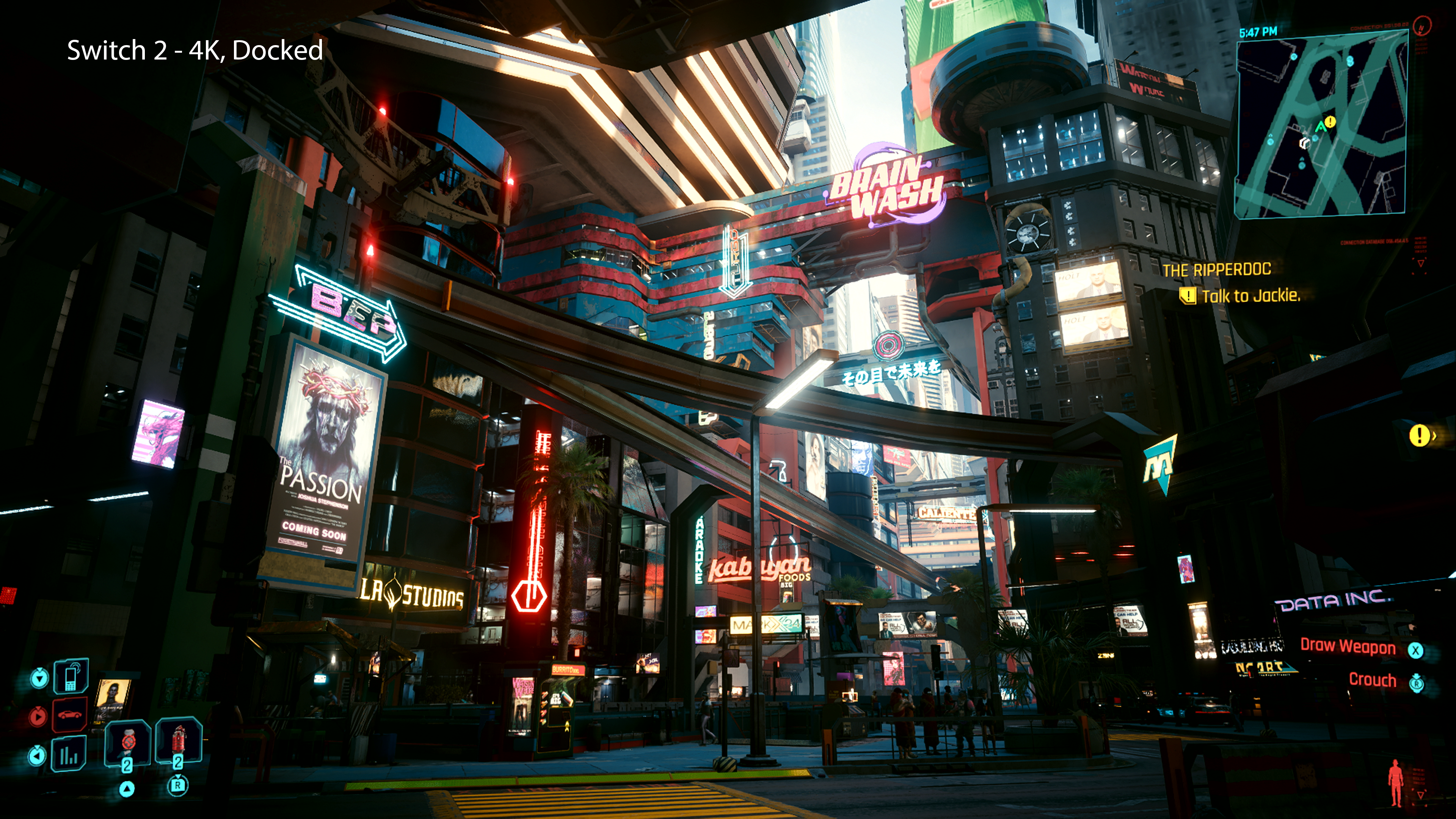
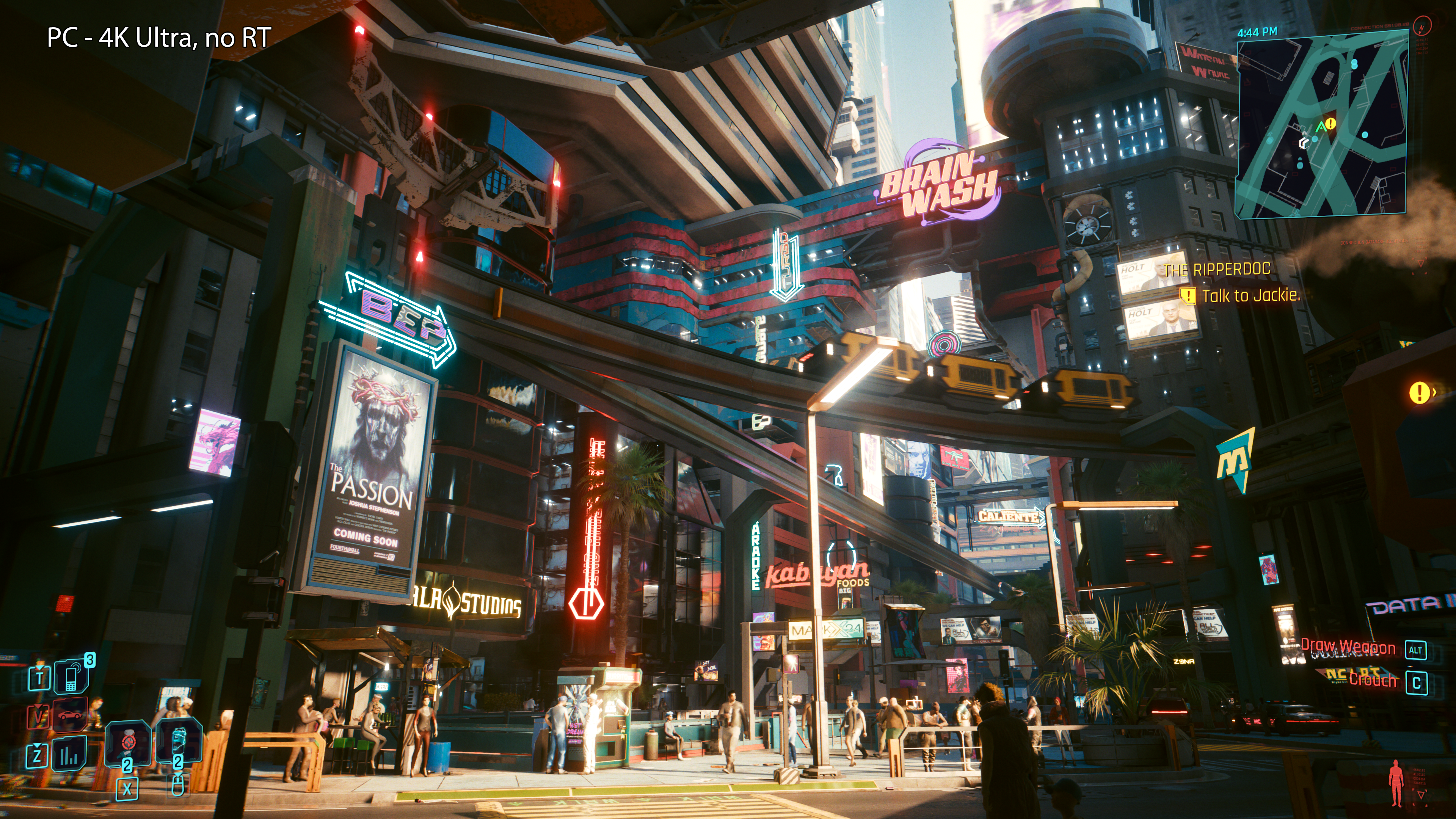

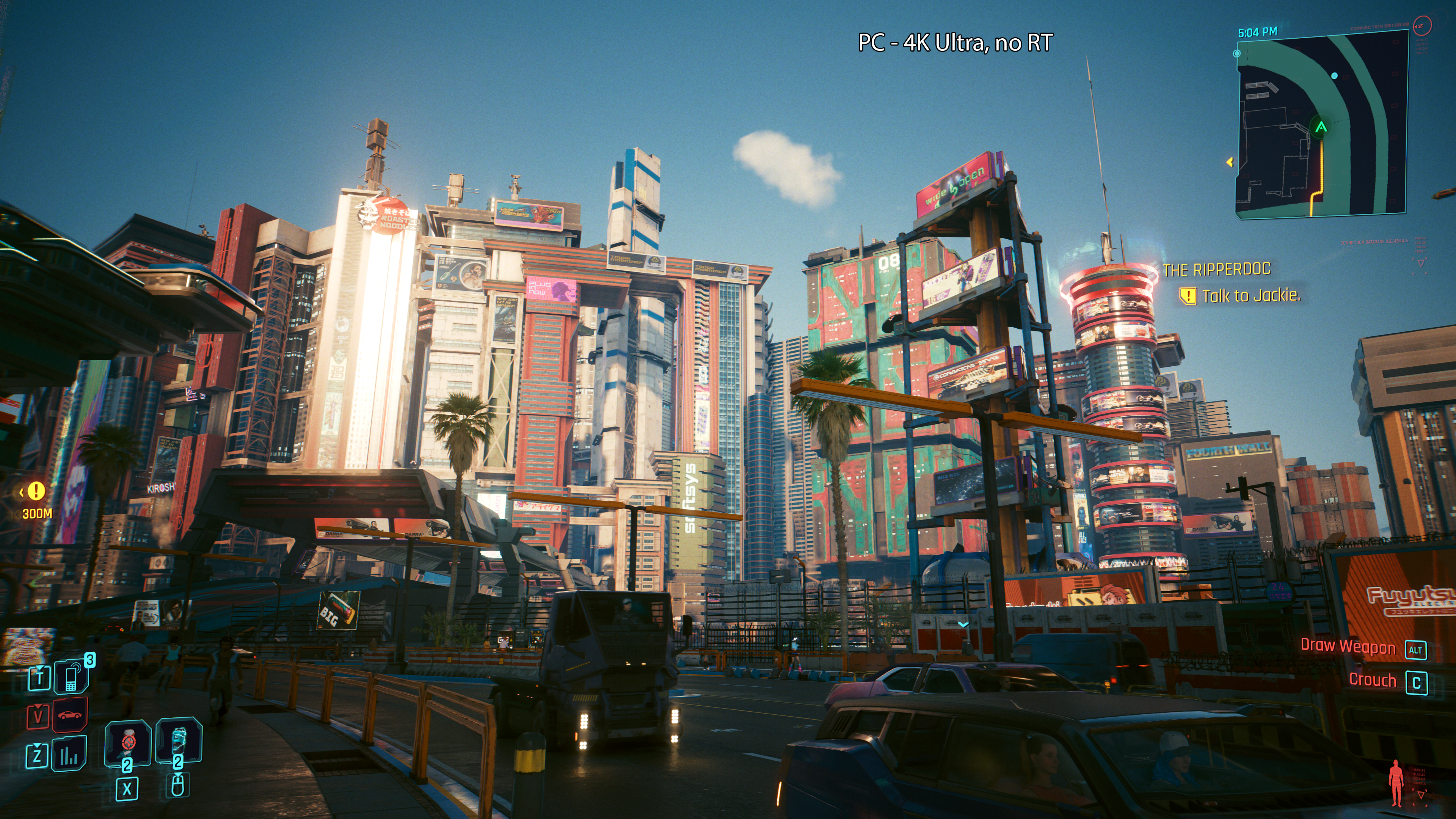
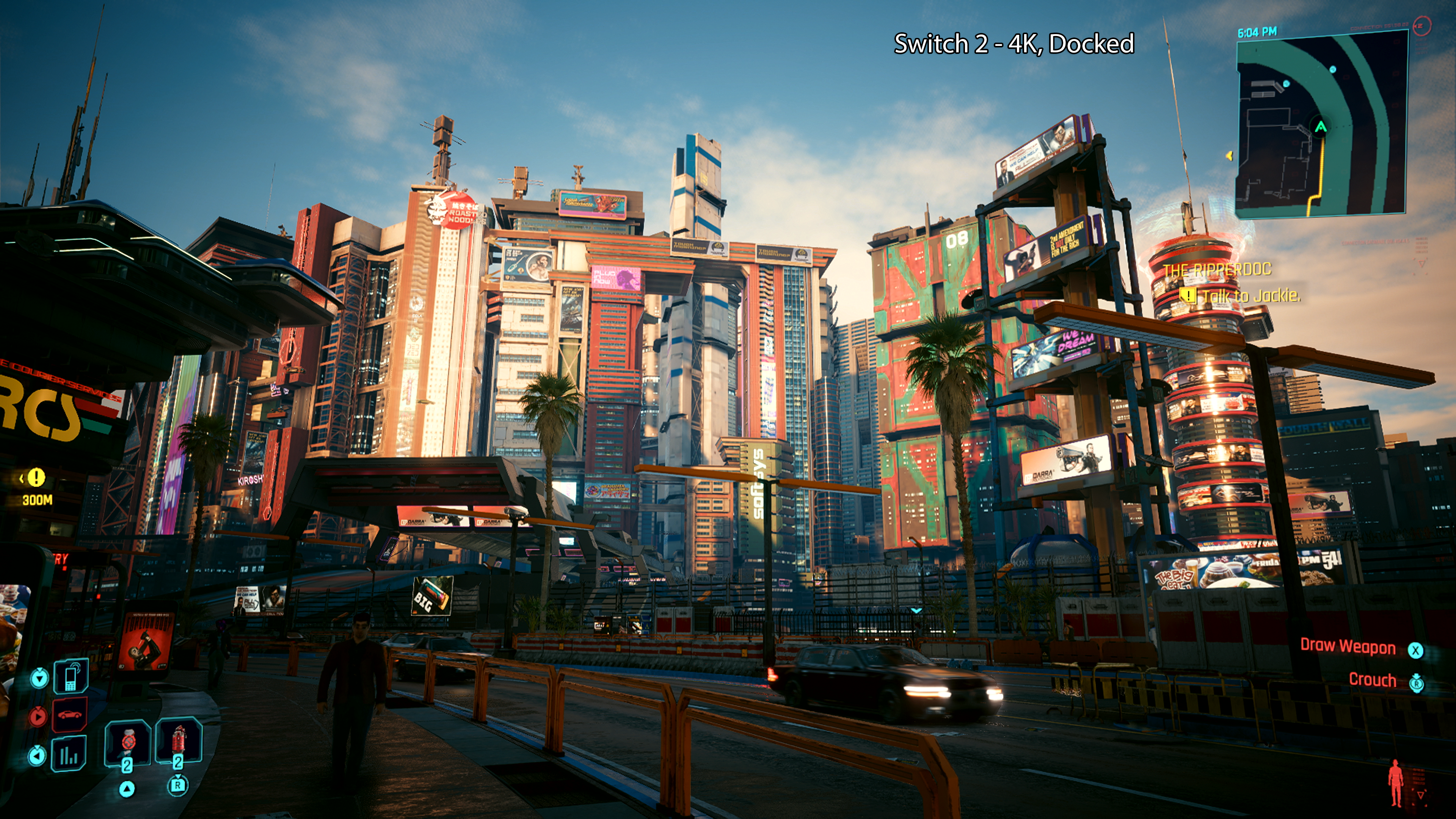
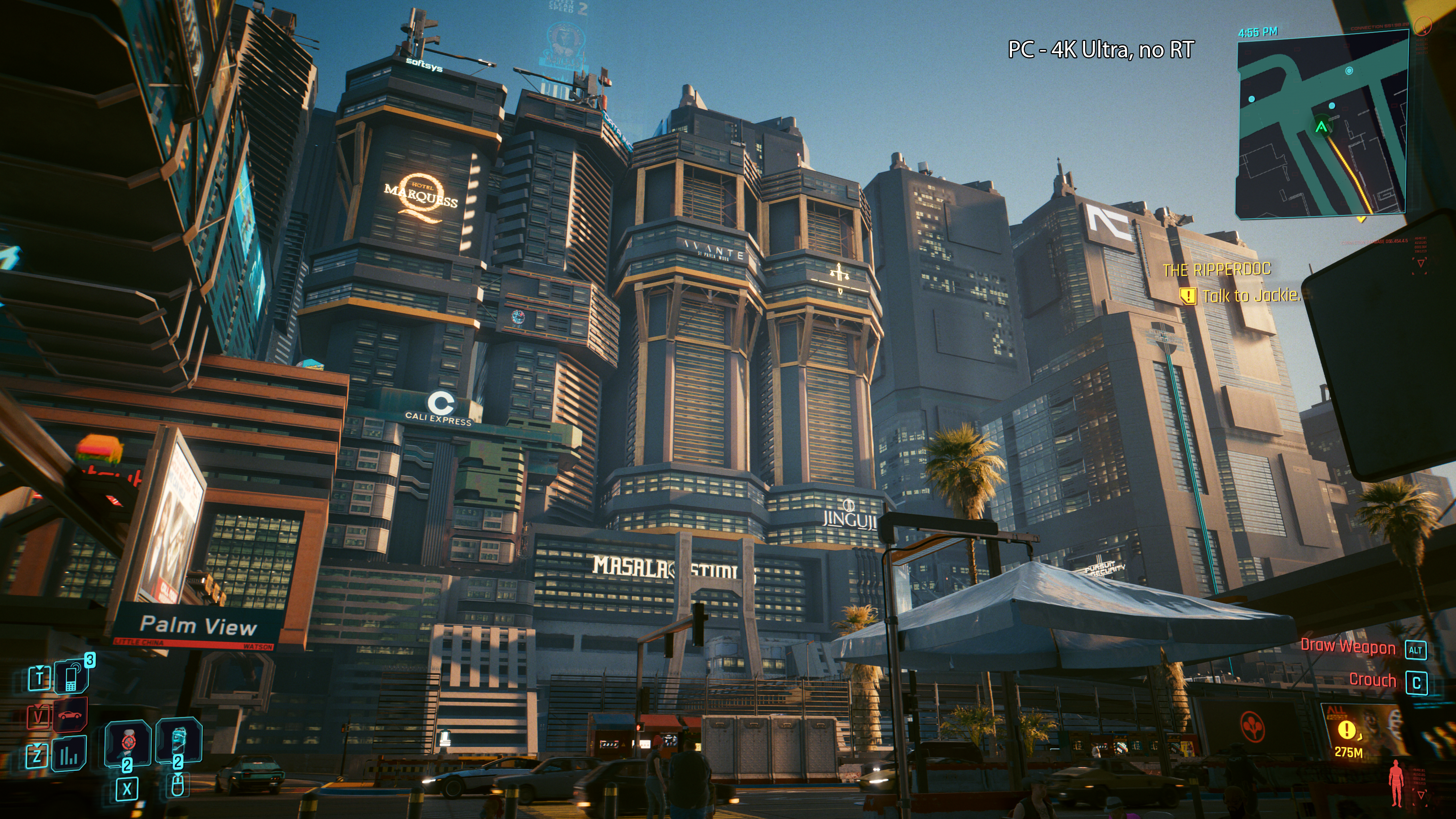
CD Projekt Red has confirmed that it’s using DLSS as one of the routes to playability on the Switch 2, but even Nvidia’s world-class upscaling tech can only do so much. Overall image quality is a bit soft, textures aren’t the crispest, and you can spot ghostly upscaling artifacts behind moving characters if you look too closely.
Beyond the limited GPU resources, the Switch 2’s CPU power might have placed a population limit on any given part of Night City. Looking at the exact same locations at the exact same times versus ultra settings on PC, you’ll notice that the streets of Night City look a lot more deserted.
Even so, the Switch 2 version does a fine job of getting the filthy streets, neon glare, and rain-streaked windows of Night City across. It’s impressive that CD Projekt Red has brought this sprawling title to the Switch 2 with as little lost in translation as it has, and if any of the Nintendo faithful haven’t yet experienced Cyberpunk on other platforms, they can finally enjoy a solid version of it in both docked and handheld modes.
The Legend of Zelda: Breath of the Wild (Switch 2 Edition)
The Legend of Zelda: Breath of the Wild deserves its reputation as a gaming masterpiece. It’s one of my favorite games of all time. Breath of the Wild could easily make the first Switch chug, though, especially in forested areas like the Lost Woods around the Great Deku Tree. Its highly variable performance constantly reminded me of the limitations of the hardware underneath.
The enhanced Switch 2 edition makes Breath of the Wild feel like an entirely new game. BotW on the Switch 2 feels so snappy, so alive, that it made the hairs stand up on the back of my neck when I took control of it for the first time. I felt fully immersed in the world, fluidly using the powers of the Sheikah Slate to bend Hyrule to my will.
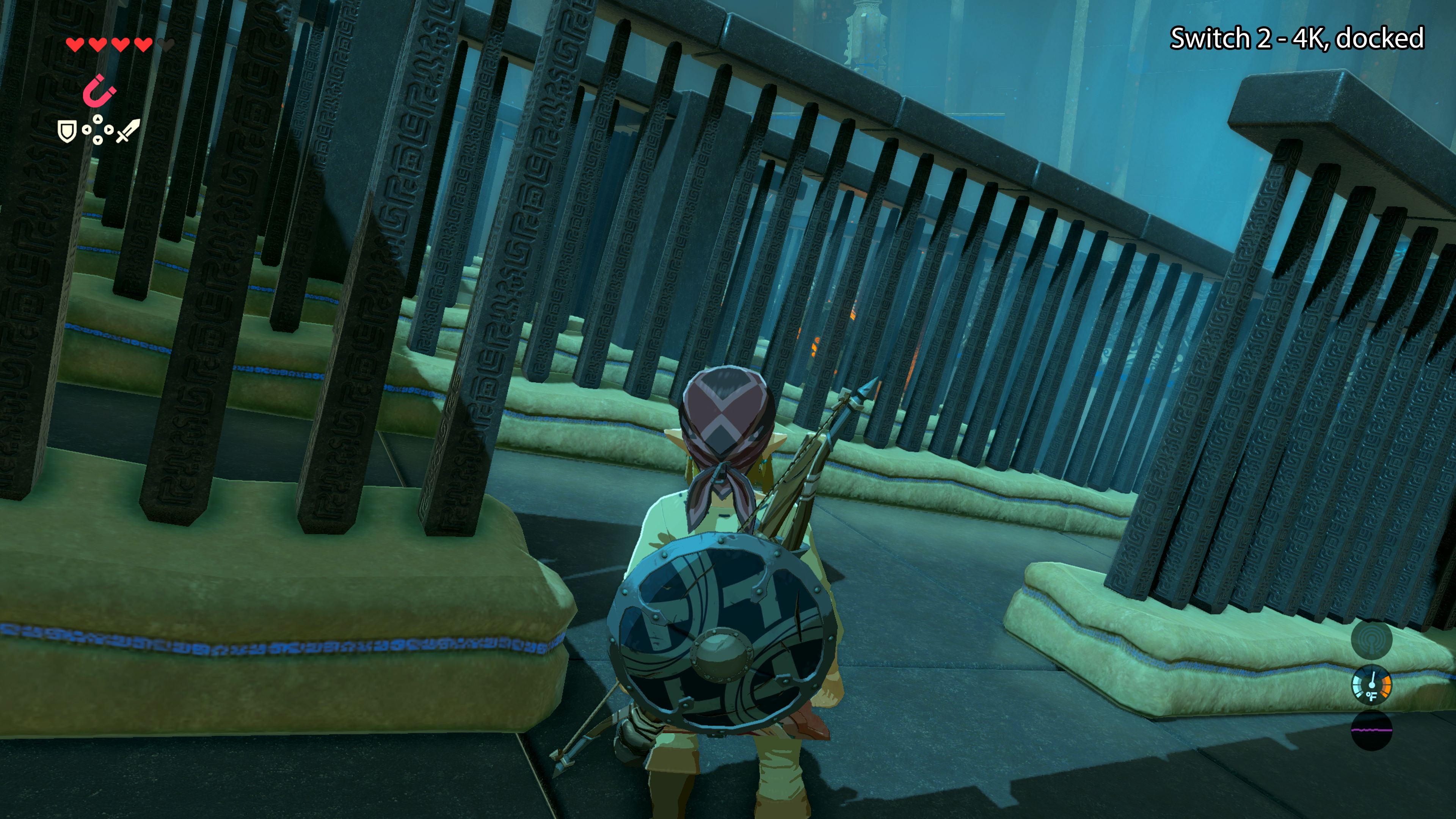
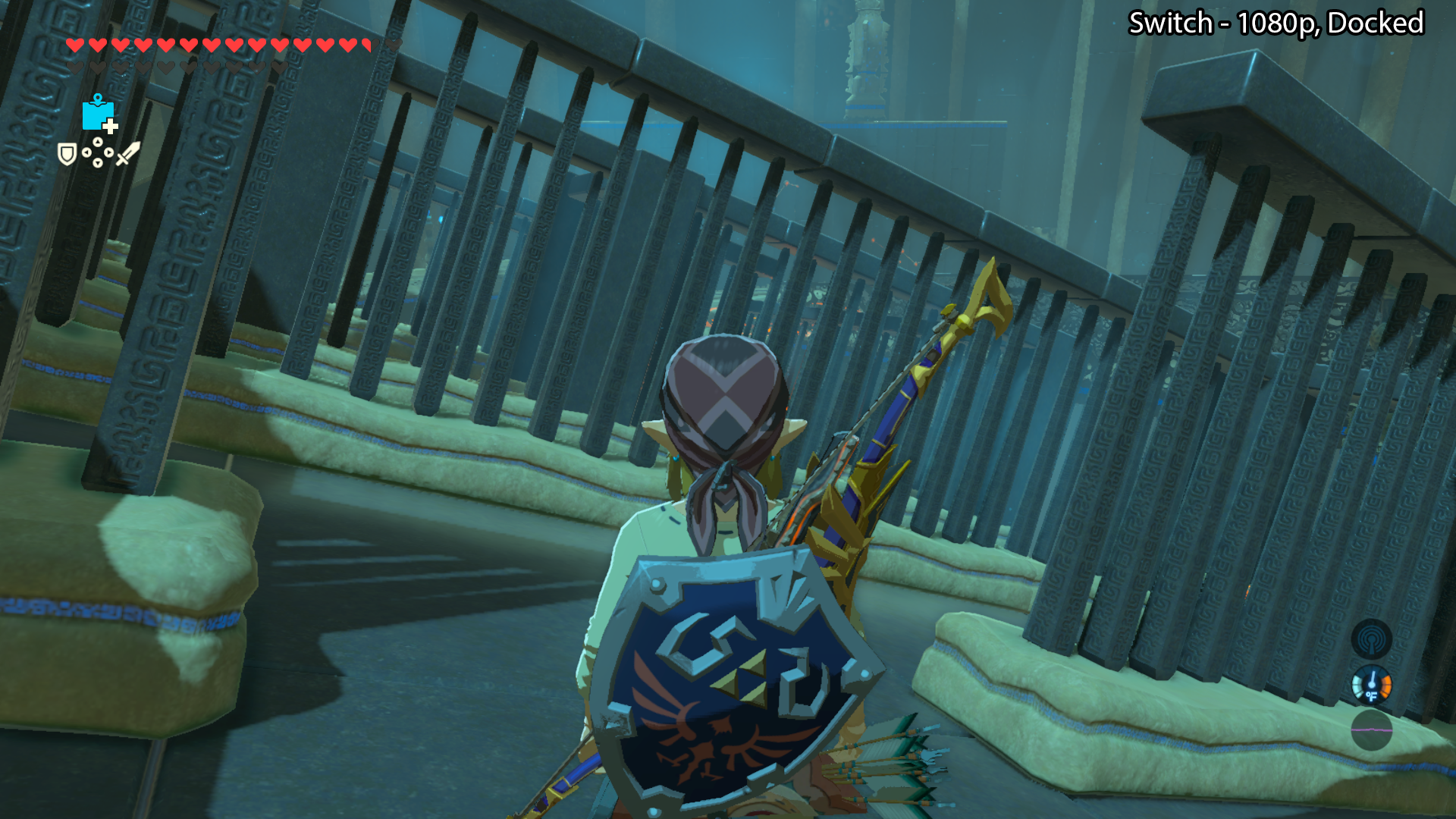
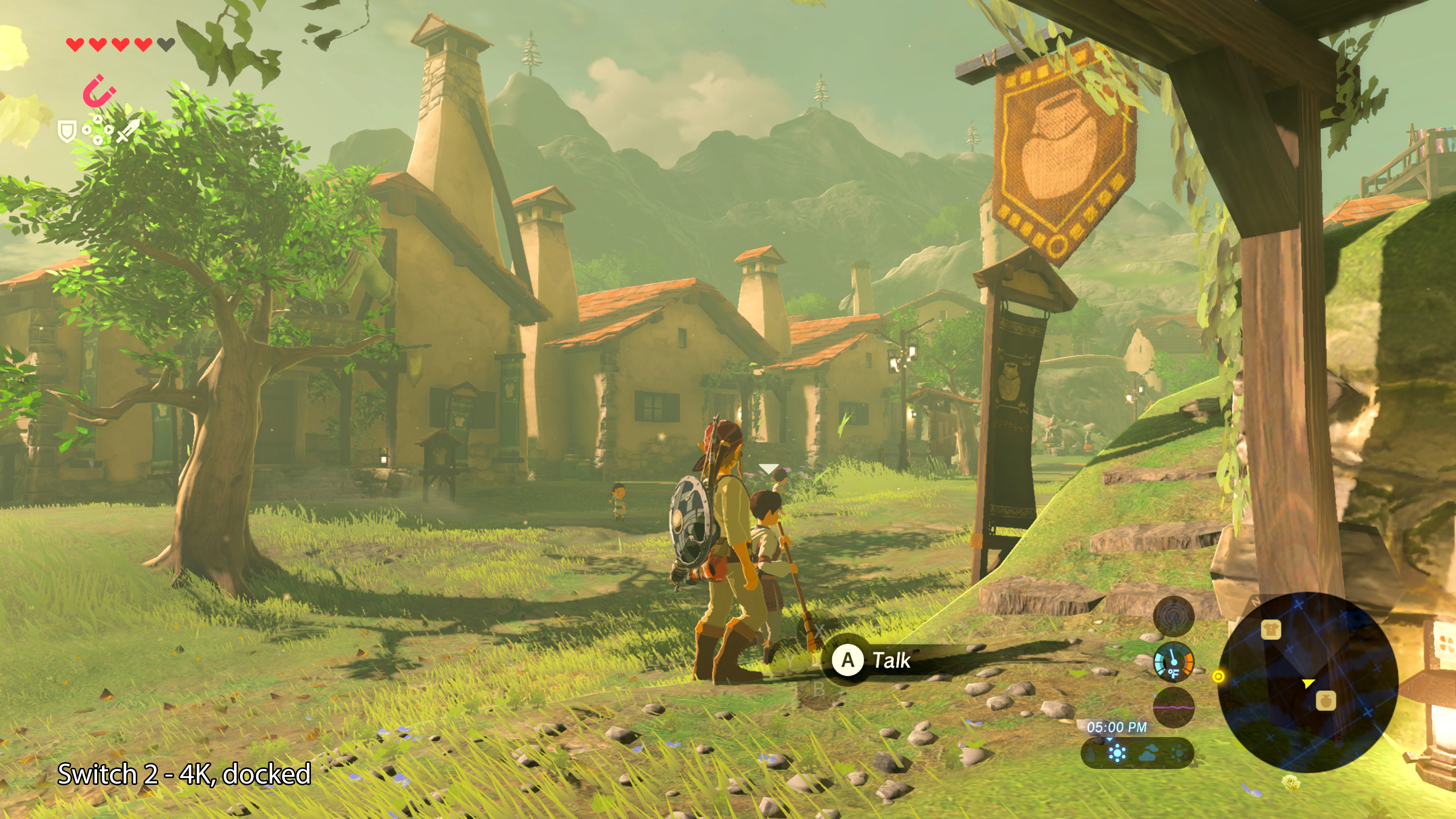

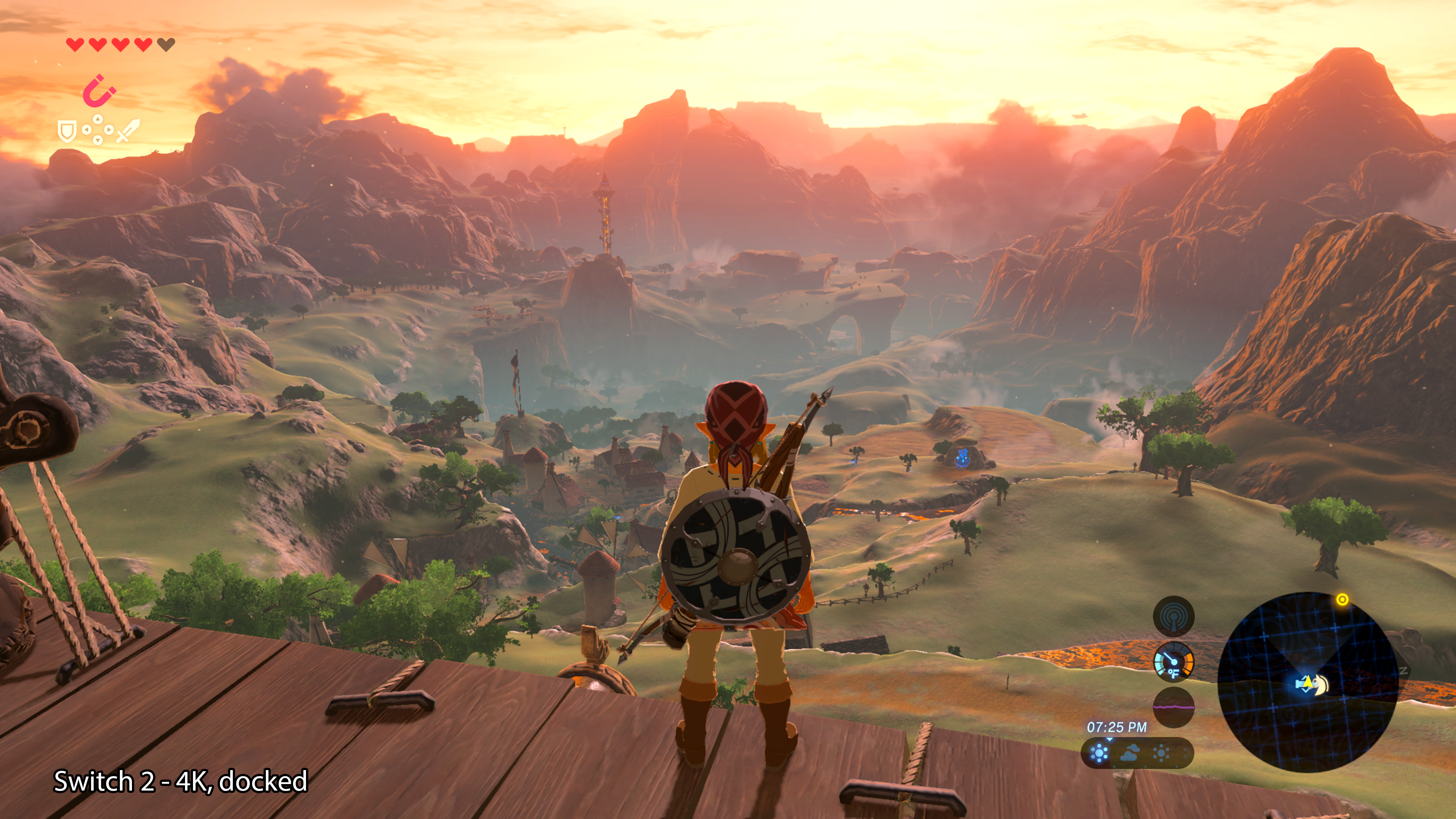

The move to 4K for this title on the Switch 2 isn't as drastic as you might expect, since BotW has a fairly simplistic and toony art style. Everything looks better, to be sure, but the differences are most obvious up close, where grass, fabric, and stone surfaces, as well as anything covered in Sheikah runes, are crisper and more detailed than ever.
I kept picking up BotW for just a little more and ended up playing for hours. I couldn’t stop drinking in how amazing it felt to interact with this game again on a more modern system. If there’s a spot in this game that can make things drop beneath 60 FPS on the Switch 2, I have yet to find it.
The extra performance isn’t just nice to look at. BotW is full of timing-based challenges and combat tricks, and the reduced input lag from a constant 60 FPS makes it way less frustrating to perfectly parry a Guardian blast or dodge an enemy attack than on the first Switch. BotW is still a tough game, but I won’t be blaming my frame rate or input lag for any of my failures.
Fortnite
I love Fortnite. I don't care if it's cringe. I love how it mashes up pop culture like Lego bricks to create random moments that you'd never dream of seeing otherwise. For just one example, I always joke that I'm never going to win if I see Goku in a lobby. And there are few experiences more heart-pounding in gaming than getting into the top three of a Fortnite match. (I know because I've worn a heart rate monitor on my Fortnite streams and measured it.)
Because Fortnite is in theory the same game experience everywhere, it’s a great point of cross-comparison for the PC and the Switch 2. At least on the PC, It’s a showcase for everything Unreal Engine 5 can do, and it can really crush a PC’s graphics card if you max it out.
Fortnite gives the first Switch headaches, though. Epic clearly had to pare back almost everything to make it happen. The descent from the Battle Bus looks rough. Particle effects are blocky, fancy lighting and shadows are few and far between, and opponents’ movements sometimes update on such a slow tick rate that you could be forgiven for thinking you were playing on an N64.
Worse, the Switch can’t push more than 30 FPS even with these allowances, so any interaction, from movement to aiming, feels almost nauseating if you’re used to the fluidity of this game on a good PC. I still took home a victory crown on the Switch when I tried it, but it was unpleasant every step of the way.
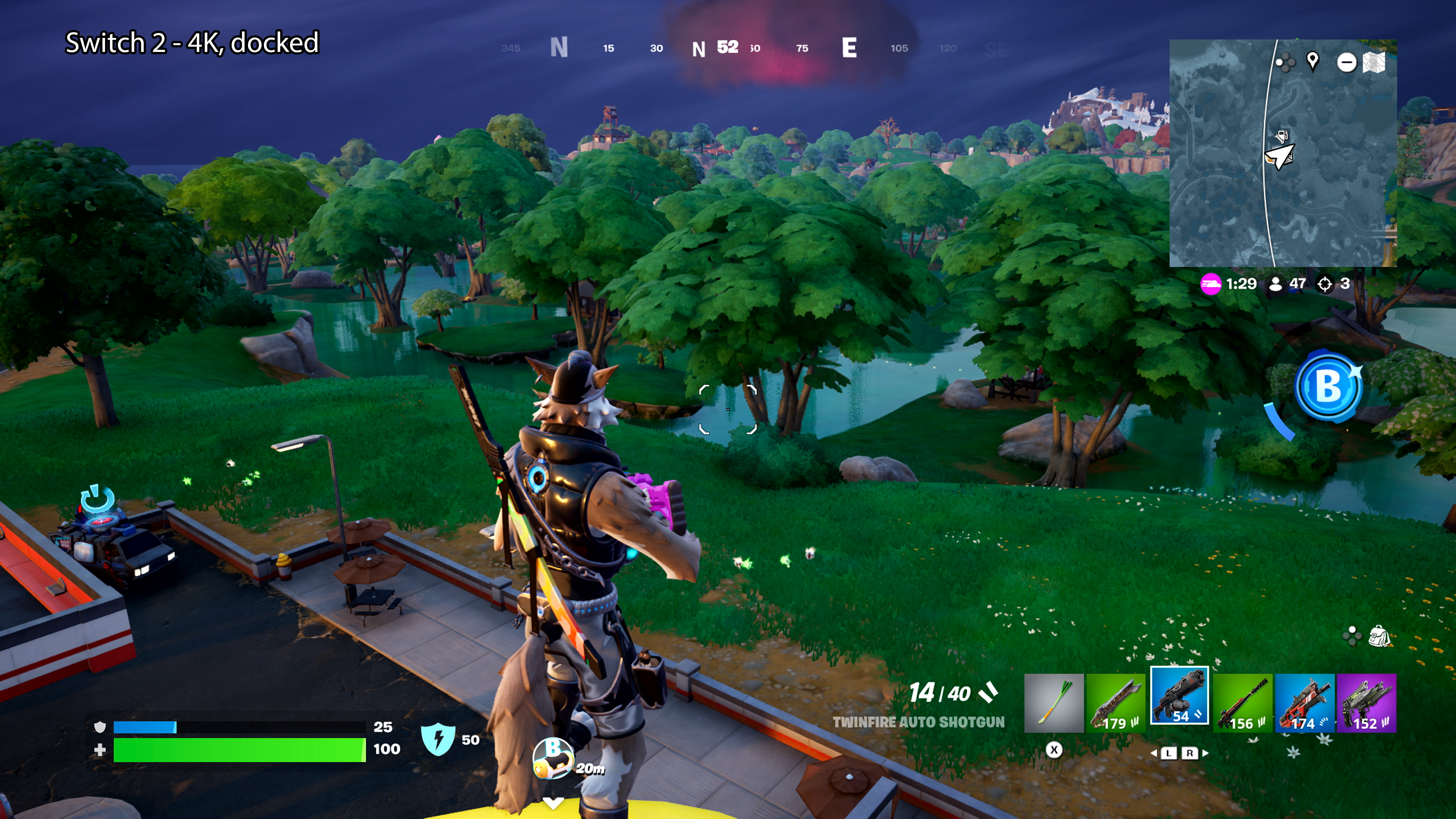
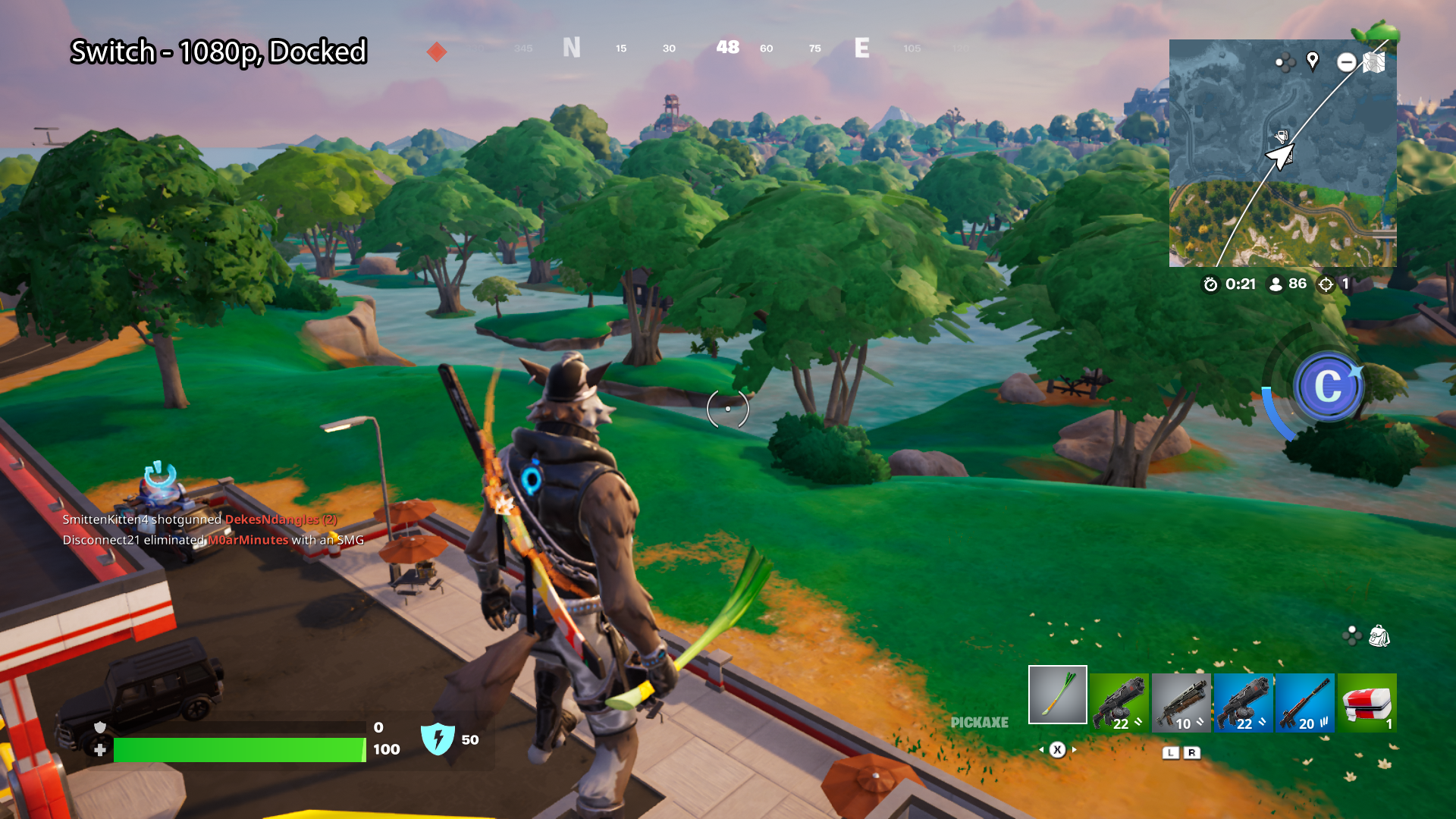
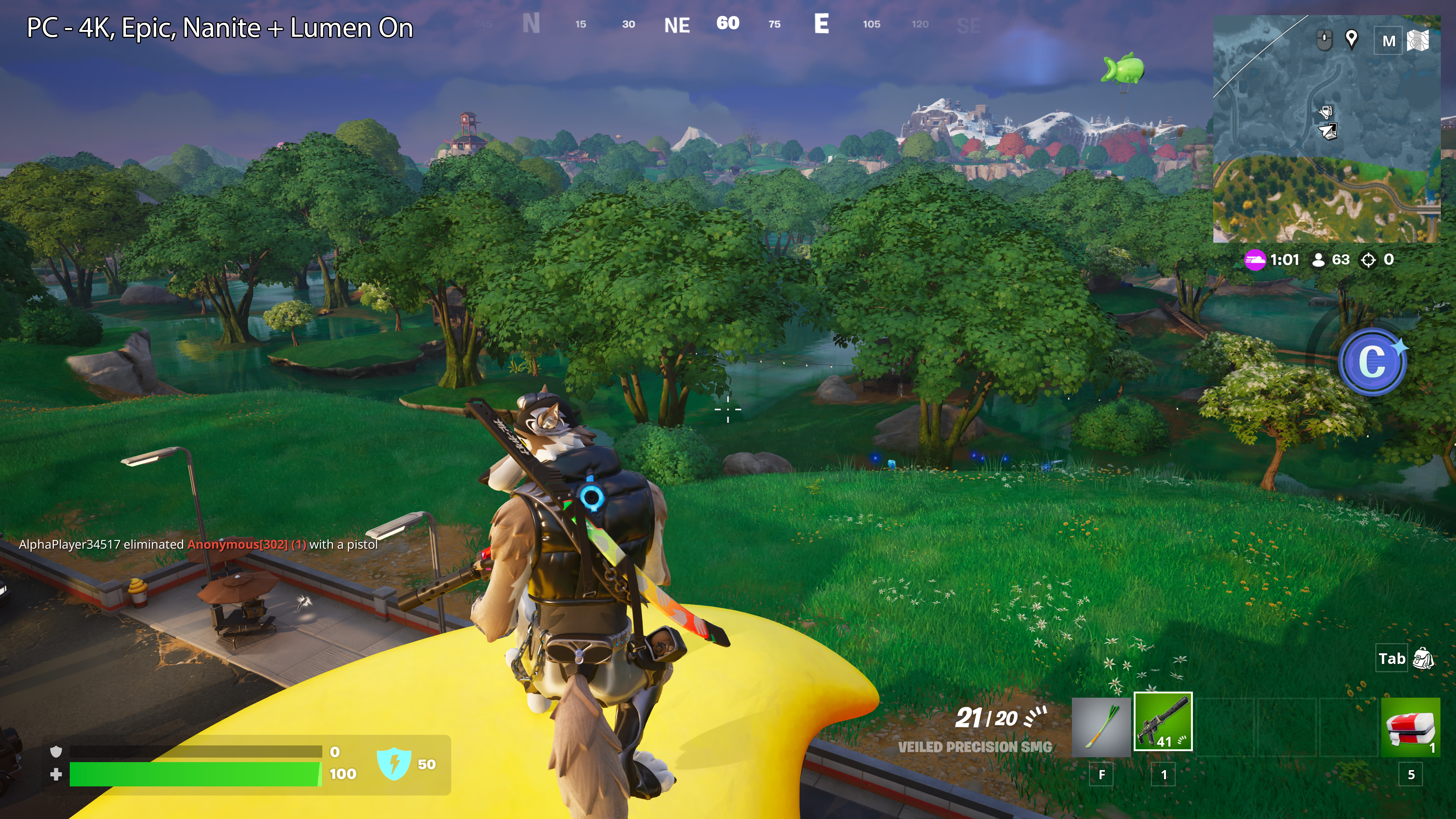


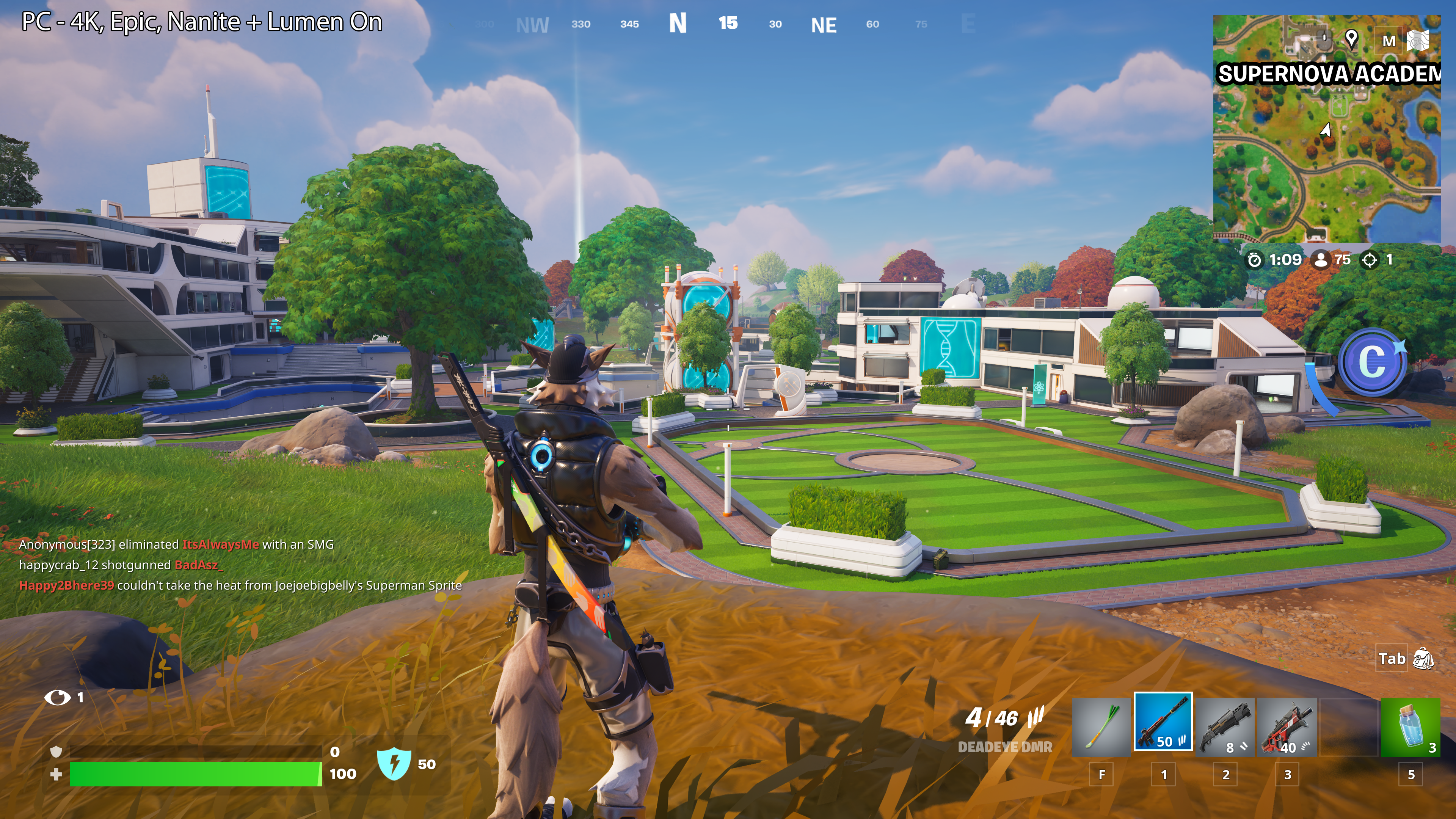
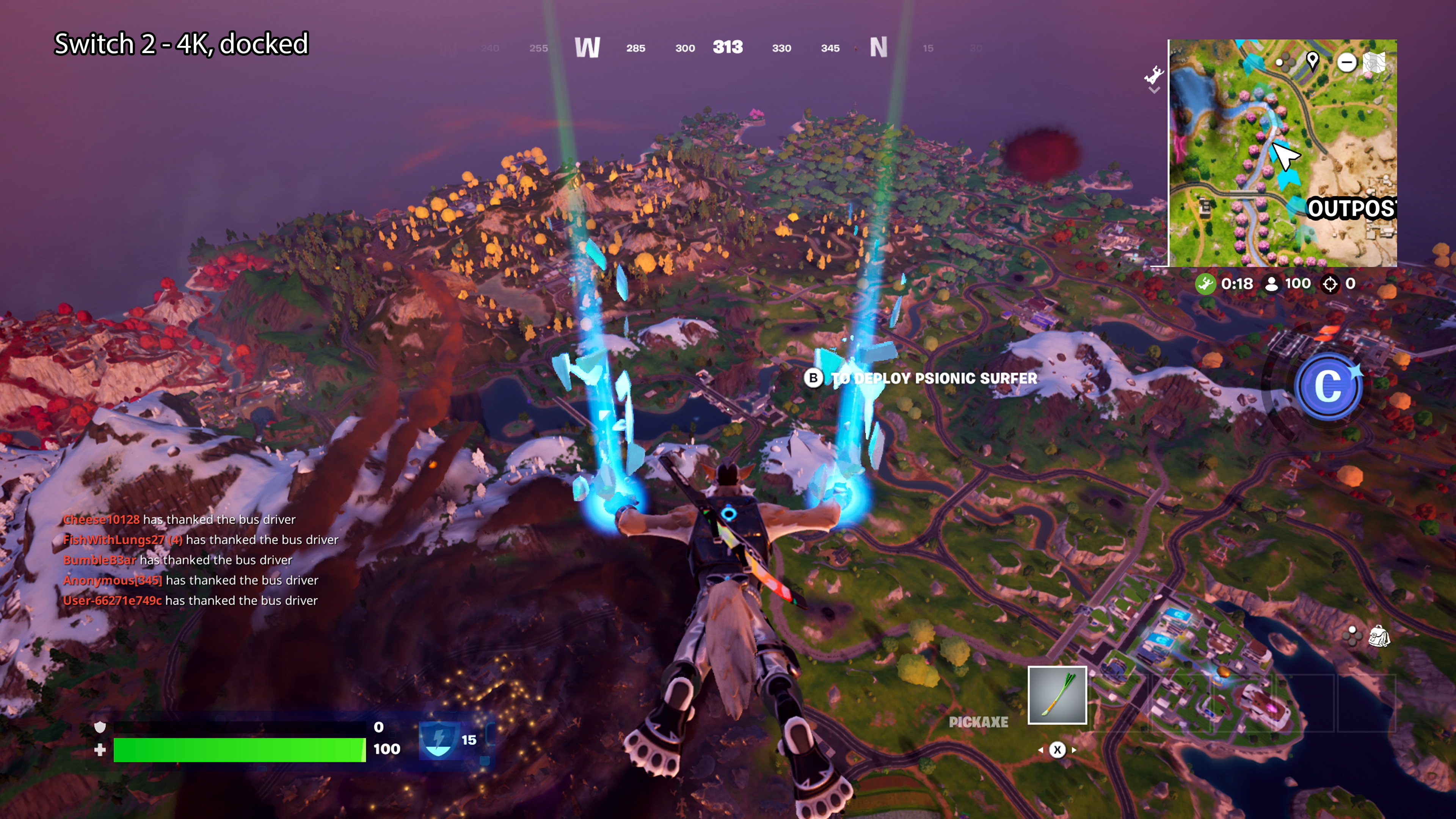
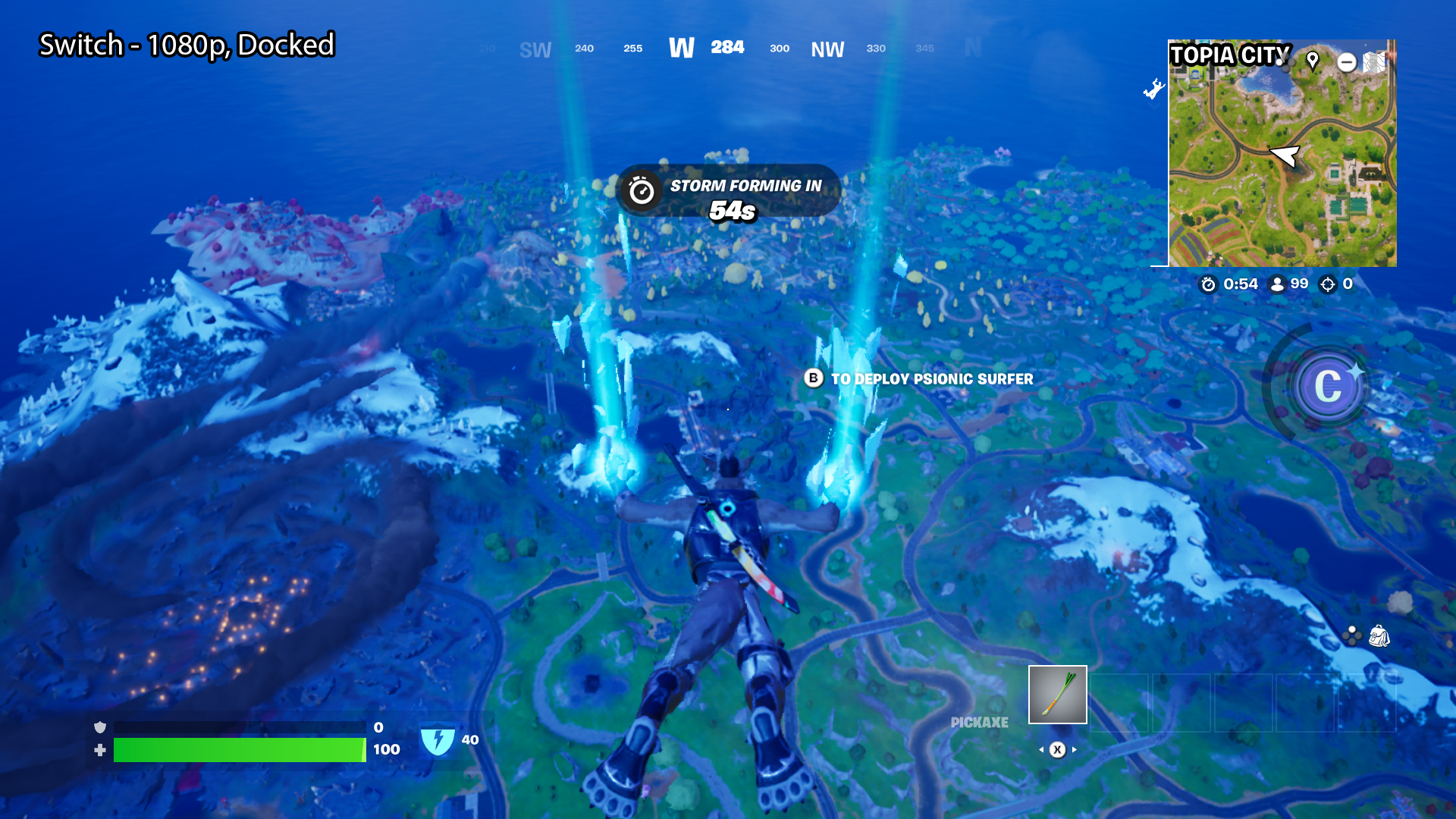

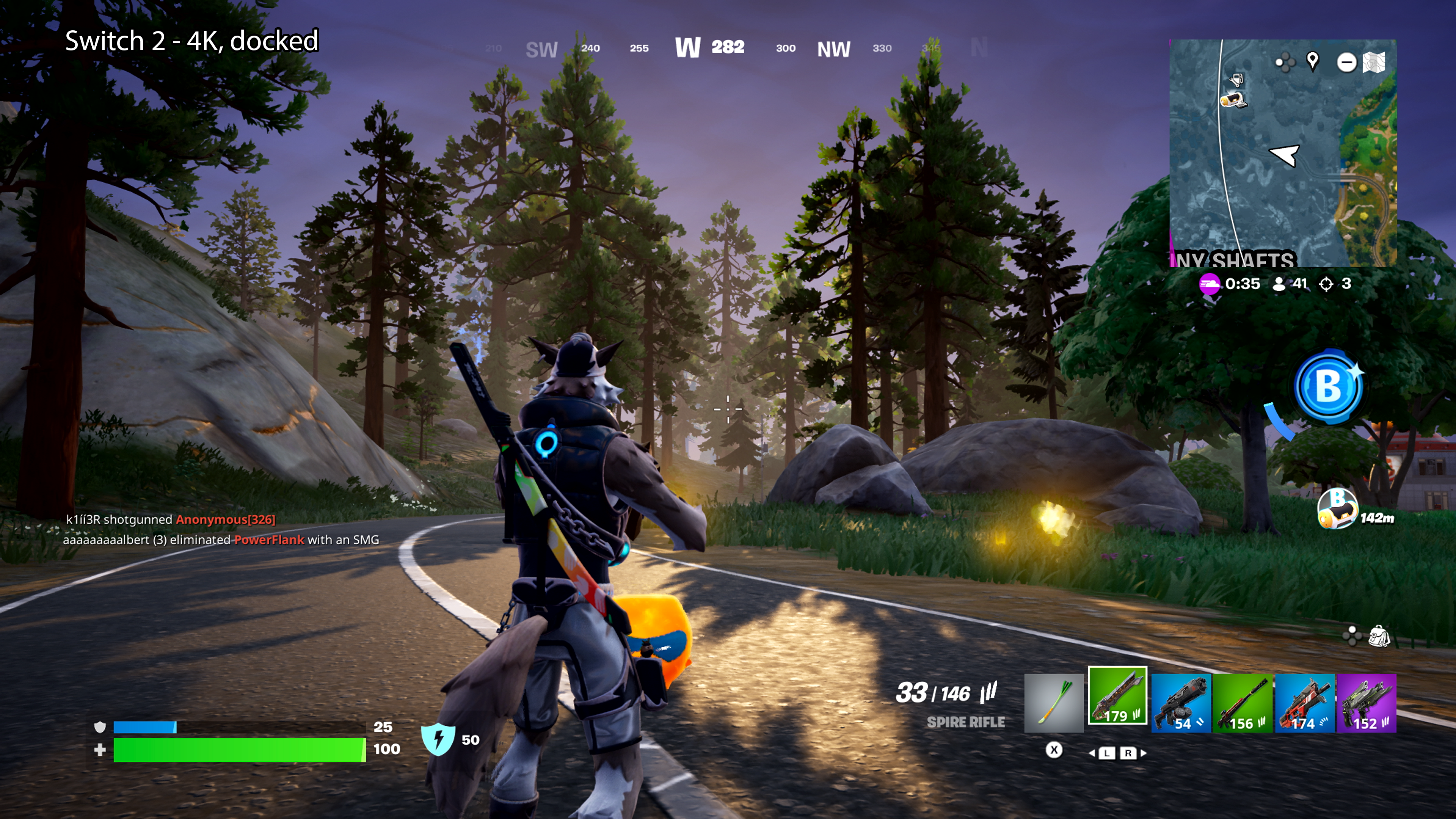
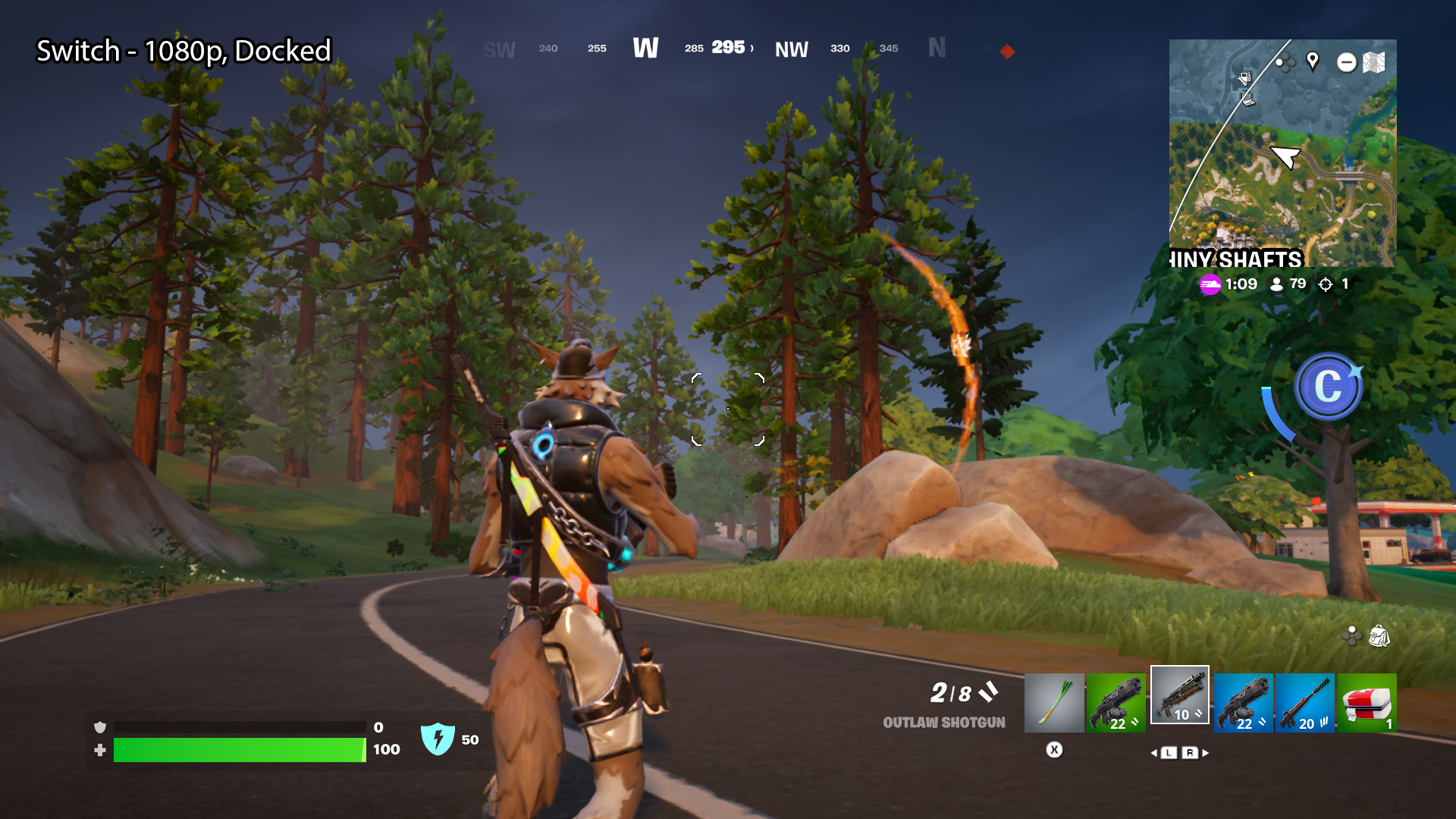
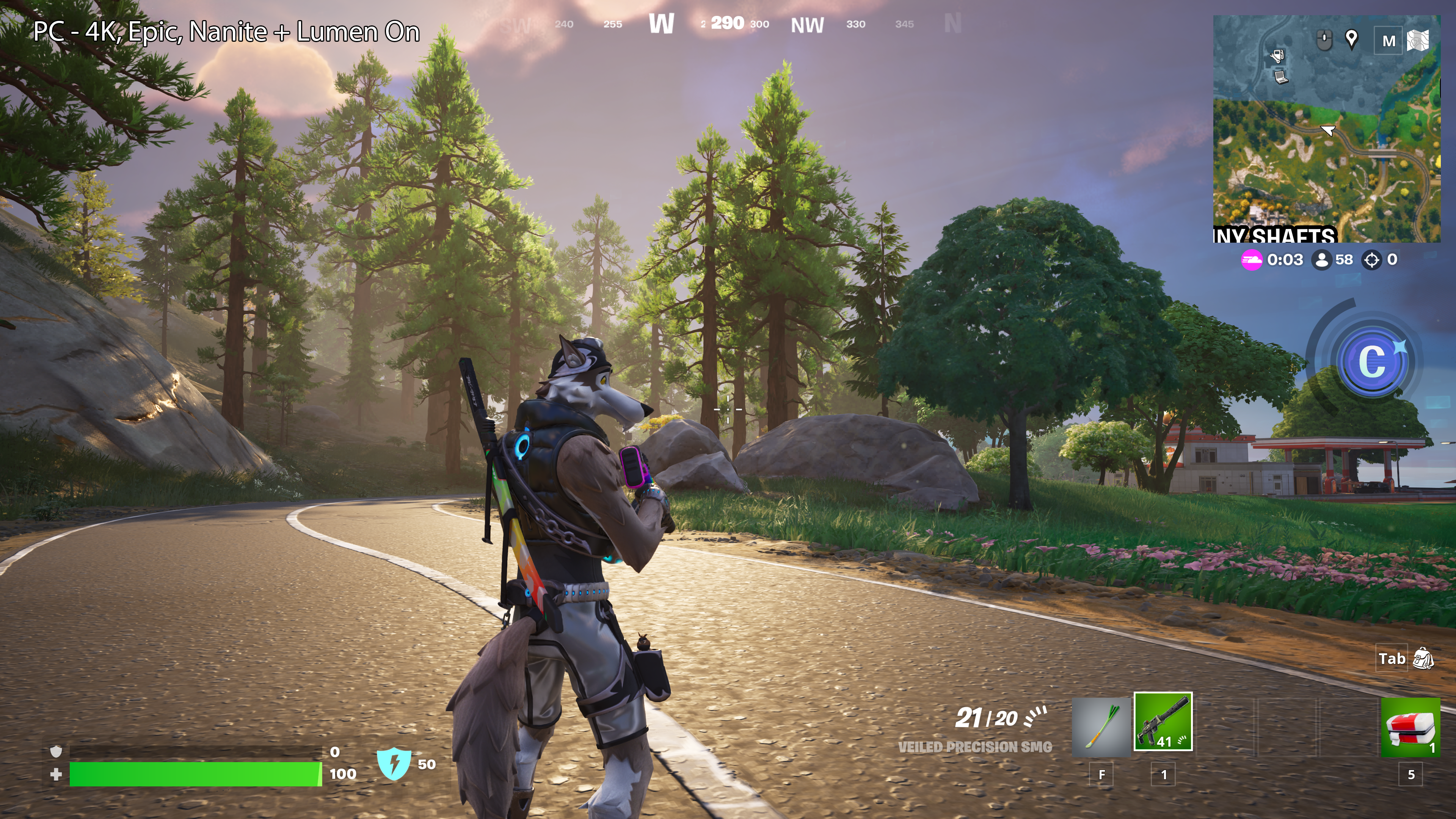
Fortnite on the Switch 2 gets much closer to the PC experience I prefer, both docked and undocked. Epic says it’s targeting 60 FPS with the Switch 2, and that matches my experience. It feels great to interact with and has much more of the eye candy of the PC version. My favorite skins looked crisp, trees and foliage looked more geometrically rich, and fancy lighting effects abounded.
Sure, you can see some details pop in suddenly as you descend from the Battle Bus or traverse the map, and certain particle effects like chugging jugs aren't as richly goopy as they are on the PC. But outside of some hitches during loading, the game itself never chugged. I never felt like throwing my controller because of frame drops ruining my aim. And I did finally beat Goku once during one of my undocked Switch 2 matches, so there.
I also used Fortnite as my test case for what the Switch 2 can do when hooked up to our 4K OLED TV. On that much larger screen, some of the graphics compromises that were made to keep frame rates up are more evident, and I’ve now seen some other things about this version of Fortnite that I can’t unsee. Certain game elements, like players dancing in the lobby, are clearly not updating on a 60 Hz tick rate, and complex geometry like trees is not as richly detailed as it would be on a PC.
Performance still felt fluid and responsive on the higher-res display, and I didn't notice any visible seams from dynamic resolution shifts or upscaling that would have spoiled my experience. Is it fun? Yes. Is it pleasing to the eye? Generally, even if I can see what's missing from the PC version. But I can’t haul my entire gaming rig upstairs when the mood strikes, whereas I can just grab the Switch 2 off my desk and drop it into its dock whenever I feel like it.
Power and battery life
Nintendo doesn’t offer any SoC-level power ratings for the Switch 2’s chip, but as a ceiling, the whole system is rated to draw just 19 W in docked mode in its official specs. That’s more than twice the rating for the original Switch (at 7 W).
It’s no surprise that battery life estimates are lower this time around. The first Switch was rated for between four-and-a-half to nine hours of battery life, while Nintendo estimates that the Switch 2 will deliver between two and six-and-a-half hours of play time, even with a bigger 5220 mAh pack inside.
We did some quick tests with the Switch 2 plugged into our power meter to see how Nintendo’s numbers line up with the real world. In the dock, it indeed pulls about 17-19 W, depending on the game. On a fully charged battery, it pulls 11-12 W in portable mode. If you’re charging the battery and playing a game in portable mode, power draw can hover between 20 W and 21 W with the included charger.
To get a sense of the Switch 2’s real-world battery life, we set the screen brightness to 50%, disabled auto brightness control, and started our testing from a full charge.
Fortnite is one of the more graphically intensive games on the Switch 2 we've seen so far, so I queued it up as our first battery life test. It works the CPU, GPU, and wireless radio hard, so it's probably one of the worst-case scenarios for this device. I played continuously until the battery ran out, and I got two hours and 16 minutes of gaming in before the console shut down.
Taking the wireless radio out of the equation with The Legend of Zelda: Breath of the Wild extended my play time. I was able to journey across Hyrule for just shy of three hours (2 hours, 56 minutes, 34 seconds, to be precise).
Less demanding or mostly 2D titles should run longer, and dimming the display further or enabling auto brightness control should also help battery life a bit, but the upgraded SoC and higher power draw mean that the Switch 2 isn't going to provide better battery life with relatively demanding games versus the current crop of Windows handhelds or the Steam Deck.
The Switch 2 is also pretty slow to charge. It took about two hours and 20 minutes to go from zero to 100% on the included USB-C charger. This is still better than Nintendo's specified three hours, but in an era of fast charging support across any number of devices, it's rather pokey. Don't expect to juice it up to 100% during a layover or other brief downtime.
Noise levels
Even running Cyberpunk 2077 and Fortnite, the Switch 2 is practically inaudible in docked mode, producing a delta of about one dBA over our test environment’s noise floor. I had to turn off literally every other electronic device in my testing area to even measure this difference, as even the faint electronic whine of sleeping monitors was enough to muddle my measurement.
Sure, if you put your ear right up to the exhaust port on the top of the Switch, you’ll hear its fan faintly whirring. But it’s so quiet from any reasonable distance that I’m confident calling it inaudible in regular use. That’s a refreshing change from the roar of the 360 mm CPU cooler on my gaming PC when a title has to compile shaders.
Thermals and surface temperatures
We pulled out our trusty thermal camera to make some observations of the Switch 2’s operating temperatures in docked and handheld modes.
In docked mode, the Switch 2's exhaust vent reaches between 116 and 117 degrees Fahrenheit (about 47 degrees Celsius) while running Fortnite. Since you won't be touching any part of the Switch 2 in this mode, this measurement is largely academic.
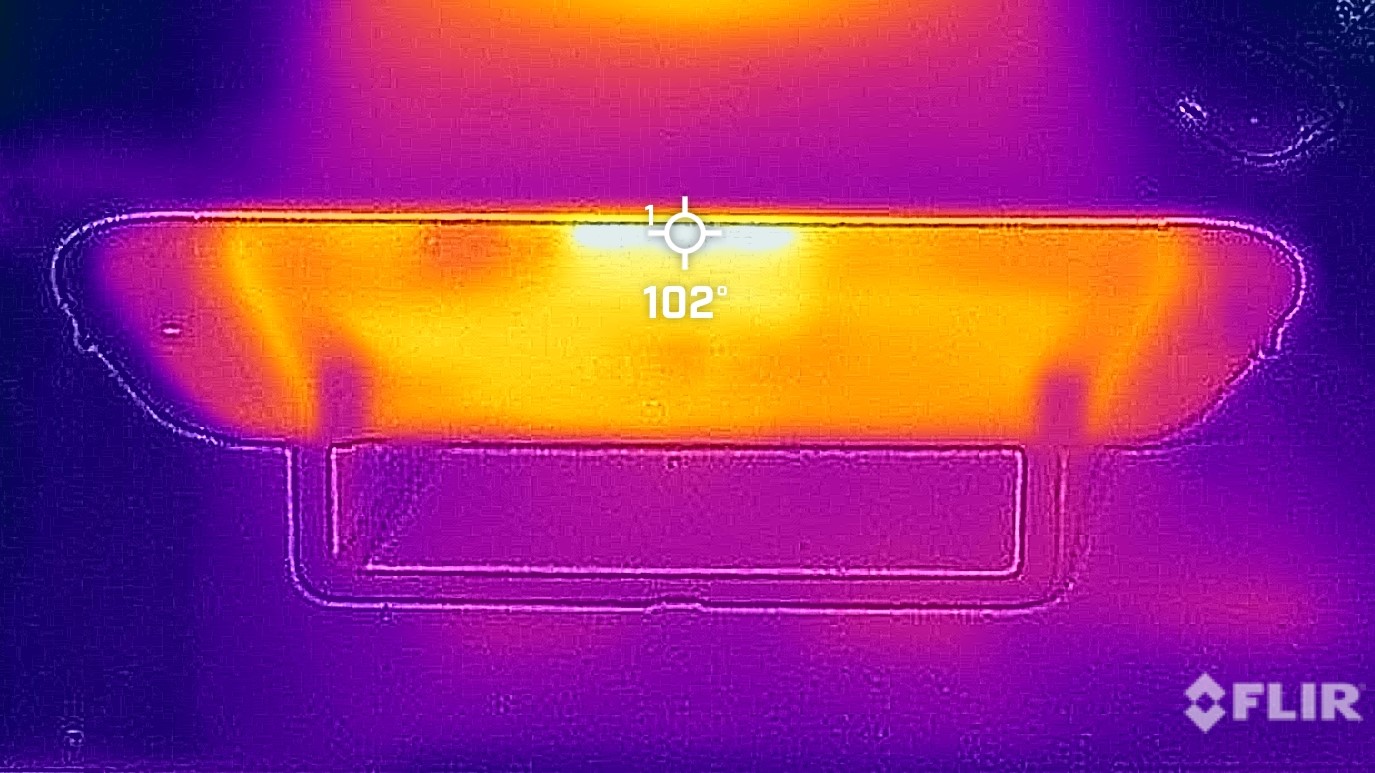
In handheld mode, the Switch 2’s exhaust only reaches about 102 F (39 C), and no other part of the unit feels more than warm to the touch.
Data transfer and storage
Even with a Wi-Fi 6 radio on board, game downloads take forever on the Switch 2 compared to my recent PCs. I have gigabit fiber service and a Wi-Fi 6 router, and even the massive downloads for the latest AAA games finish in about half an hour to 45 minutes on my PC.
Queue up Cyberpunk 2077 or Fortnite on the Switch 2, though, and prepare to do something else for two or three hours while the bits flow. It’s possible this is a result of millions of players hitting Nintendo’s content delivery servers at once, and there is an Ethernet port in the Switch 2’s dock that might improve matters, so we’ll need to dig into this issue a bit more.
It didn’t affect my gameplay, but I frequently saw the network quality warning in Fortnite while gaming in my first-floor office, too. Our wireless access point is on the third floor of our townhouse, so it’s a challenging environment for connectivity to begin with. Even so, none of my PCs have any issues with network speeds or stability down here.
The Switch 2's included storage also feels paltry in an age of cheap, dense NAND. I've only installed three games on it, and I’m halfway through its 256GB of space. And it's not cheap to get more room. It's trivial to find a terabyte of NVMe storage for a PC for well under a hundred bucks, but adding the same amount of storage to the Switch 2 with a microSD express card costs over $200 as of this writing. I'm praying those cards will get cheaper as the advent of this console spurs production and adoption.
Peripheral and display compatibility
During my time with the Switch 2, I've treated it like any other gaming system in my house to see whether there are any annoying limitations to what you can plug into it (assuming a peripheral claims Switch support, of course).
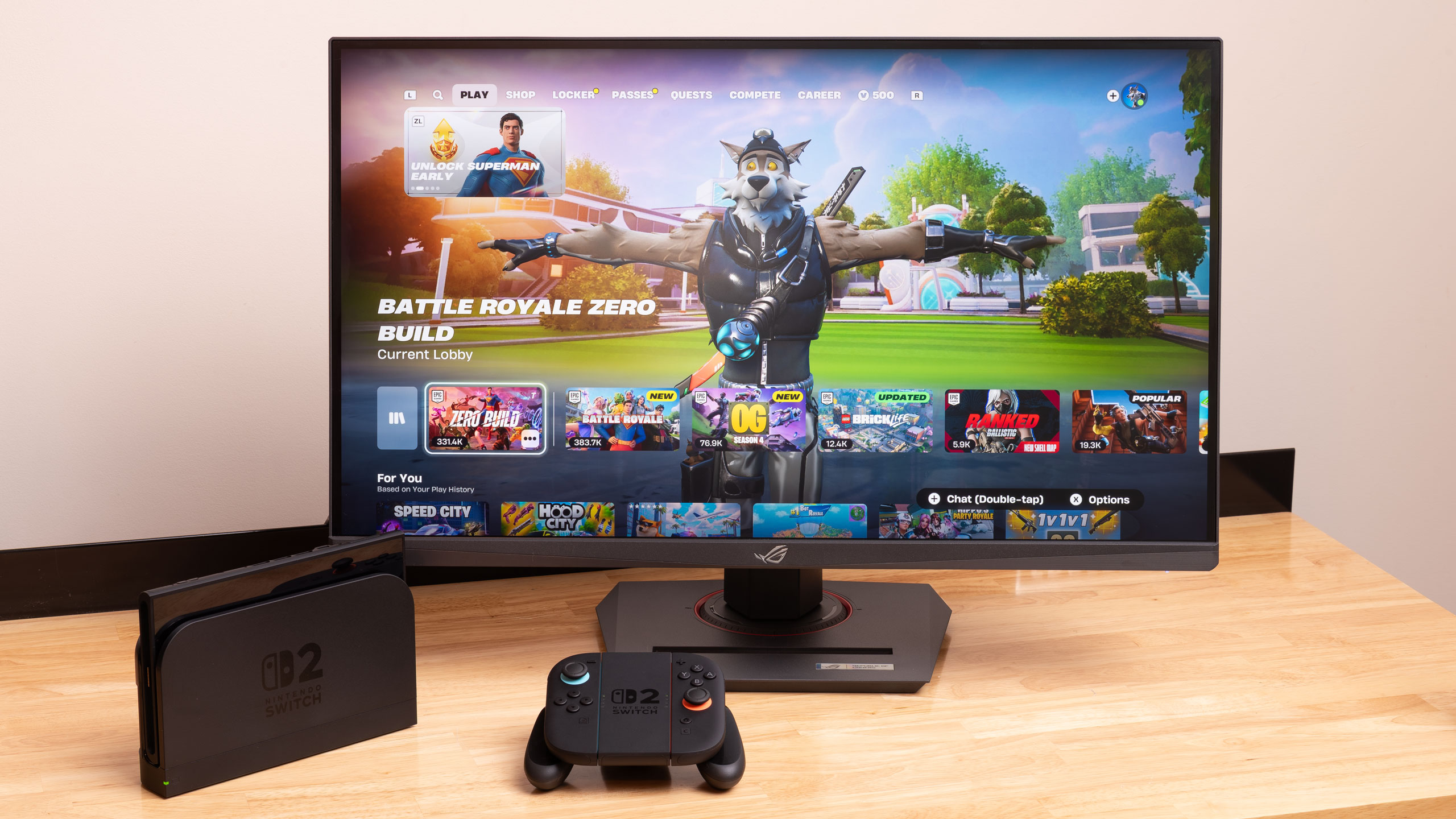
First up, my ROG Strix XG27UCS 4K gaming monitor fired right up with the Switch 2 dock connected to its HDMI port, and it presented itself to the system as a 120 Hz, HDR-ready monitor (even though VESA DisplayHDR 400 isn't a true HDR experience).
My relatively ancient Corsair Void Elite wireless headset was also plug-and-play with the Switch 2 in both docked and portable modes. It looks a bit silly to have a giant wireless dongle and a USB-A-to-C adapter sticking out of the top USB port of the system in portable mode, but it does work.
I also have a pair of Soundcore Space A40 SE Bluetooth buds if appearances do ever matter on the go, and those also paired right up with the Switch 2. Finally, we already have a first-gen Switch Pro Controller, and it works just fine with the Switch 2, though it doesn't have the new Chat button.
I never felt like I ran into any arbitrary hardware roadblocks with this console that would require me to go out and spend more money just because Nintendo needed a few more bucks in its coffers.
Bottom line
The Switch 2 warmed my stony PC-purist heart. It’s easy to deliver high gaming performance and cinematic AAA experiences within unlimited power and thermal budgets. It’s much harder to do any of that in 20 W or less.
The Switch 2 is a cool, quiet, flexible device that lets you game how you want, where you want with solid performance and fidelity. Is all that worth $449 (or $500 with Mario Kart World bundled in?) After a few days with it, I think this is as much a question for the heart as it is for the head.
If you love Nintendo’s first-party IP, you’ve probably already ordered a Switch 2 of your own (or are checking in often for restocks). From what we've seen so far, the company's iconic franchises look and feel better than ever on the Switch 2. I’m totally hooked on the Breath of the Wild experience on this console, and I can’t wait to replay it in my spare time.
Pair that with the vast back catalog of the various Virtual Consoles and the Switch 2’s inherent portability, and you’re getting massive amounts of fun for your money anywhere you want to game. At $50 a year for Nintendo Switch Online + Expansion Pack, which includes a small but growing library of GameCube games that can only be played on the Switch 2, the whole package seems like a pretty good value.
We do have a couple gripes with the Switch 2 so far. We wish its wireless transfer rates weren’t so pokey. More internal storage would have been nice for the price, given the high cost of microSD Express cards. And we’re really, really hoping that VRR support comes to every display with the Switch 2 sooner rather than later. The internal display is nice enough, but we want the same fluid gaming experience everywhere.
Nintendo also didn’t use the occasion of an all-new console to fix the wear-prone sensors of its Joy-Con joysticks, so failure of those components seems likely down the line. And iFixit’s teardown of the Switch 2 suggests that even repairs as predictable as a battery replacement or a failed USB Type-C port are likely to be even greater headaches than they were on the original Switch.
On the whole, though, I’m willing to forgive the Switch 2 its minor shortcomings. It’s a ton of fun no matter how you play, and isn’t that the point of gaming to begin with?
Stay tuned as we continue our Switch 2 testing, especially for an in-depth look at battery life. Once we're confident that we have the whole picture of this console, we'll give it a final rating.

As the Senior Analyst, Graphics at Tom's Hardware, Jeff Kampman covers everything to do with GPUs, gaming performance, and more. From integrated graphics processors to discrete graphics cards to the hyperscale installations powering our AI future, if it's got a GPU in it, Jeff is on it.
-
Notton Apparently the Wifi on Switch2 might be bugged.Reply
It seems to not work well in a mesh network, but if you put it right next to the wireless AP/router, it'll hit Wifi6 speeds. Pulling the back cover off also seems to help. (no conclusive causes or fixes yet) -
Giroro It's bigger than my Switch OLED, heavier, more expensive, worse screen and worse battery life.Reply
So for at least the next year, my Switch 2 is joining my Steam Deck in collecting dust at the bottom of a closet in my "I have a better and less-embarrassing way to play Balatro" pile. -
Nekroh11 So this article is just ignoring any discussion on the terrible battery life? Not even in the pro/con section? Did I miss it or are we ignoring a major talking point?Reply -
Giroro When it comes to webcam support, Switch 2 supports 3rd party cameras - but only bad ones.Reply
In my go-to stack, only my disposable Logitech Brio 300 works - and everything else I use is a "real" camera, which do not work. My running theory is that the Brio outputs video as Motion Jpeg by default (which is why its video quality is awful), and everything else I have on hand outputs using a modern codec by default.
Sony FX30 - Recognized as a microphone (and works as a microphone)
Generic HDMI to USB-C adapter - Recognized as a microphone (but no audio)
DJI Action 5 - Recognized as a camera, but no video displayed (possibly disconnecting itself, not sure)
Not that it matters, so far the "C" button is exactly what I expected it to be: An incredibly annoying popup generator that I accidently press every single time I'm trying to get back to the home screen (and probably will never in my life press on purpose). Just like the screenshot button, except now a lot closer to the button I'm trying to press. No idea why they couldn't just make the screenshot button assignable to this functionality - or at least put the two useless buttons next to each other.
So yeah, they decided to keep a dedicated button to use a camera that was almost certainly removed from the original design. The console seems less like a thought out and refined as a sequel to an obscenely successful product, and more like a first attempt at a new take on a kid's toy - which happened to come out 3 years later than it was probably supposed to. It feels like the level of design refinement of the original non-lite DS as opposed to a 3DS... Except the DS had budget-priced games, and hardware that didn't cost more than an iPad.
Playing a Switch 2 feels exactly like playing a Switch. Not the good Switch, a launch Switch... except slightly worse because it's bulkier, heavier, more expensive, and they force you to sign a legal agreement preventing you from owning the hardware you just paid for.
IMO they should have just skipped this "2022" design, and just launched with whatever 2025 midcycle refresh that we probably would have had by now, if not for Covid making demand massively surge for the Switch at the end of its life. Whatever they've been doing to develop Switch 2 with the extra time they were given from the Switch's life extension, I don't think it was put into improving the launch offering.
Anyone who didn't get a launch Switch 2 - just wait for a year. Wait for the next Mario.
We'll probably be seeing an accelerated release schedule for improved hardware, lower prices, or both. The good games aren't even released - they aren't even announced.... so you're super not missing anything. Just let the scalpers waste money passing all the launch consoles back and forth for awhile. It's not a big deal. -
atomicWAR Reply
Yeah I noticed as much on my unit. I find if I go to airplane mode then reconnect, if I am getting a slow 10-14 mbps, and I connect to my 2.4 ghz/ 5 ghz bands not my exclusive 5 ghz which is usually the fastest... I'll hit 350 mbps and my downloads are really speedy. Otherwise my DL speeds are horrid and the experience falls in line with the reviewer. But yeah the wifi is finicky as heck with my mesh system if I don't pay attention. This needs addressing soon by the big N.Notton said:Apparently the Wifi on Switch2 might be bugged.
It seems to not work well in a mesh network, but if you put it right next to the wireless AP/router, it'll hit Wifi6 speeds. Pulling the back cover off also seems to help. (no conclusive causes or fixes yet)
Otherwise I am happy with my unit. Plays great, battery life is meh (I expected as much) but is still serviceable and so far most of my switch one games run flawlessly though I am waiting for my first issue to crop up. Time will tell. All in all I am happy with my purchase. Having a proper voice chat while playing Mario Kart world is a big game changer for online play though I have zero urge to add a webcam.
Thanks for review it was a nice read! -
cknobman @Author interested to understand how you say that todays top iGPU's top out around 4Tflops?Reply
The z2 extreme has over 11 tflops and the z1 had around 8.
The SoC in this Switch is at last 2 generations behind todays iGPU's from what I can see. -
NoobBuilder1 The OG Xbox, PS3, Switch, and Switch 2 have been the only consoles Nvidia has worked on. This makes the Switch 2 the only console, at least that I know about, that employs modern DLSS technology. I can see Nintendo wanting to get this for the console since there is no way on this planet that a console the size of your phone can be good at 4K at a reasonable price. Nintendo wanted to close the gap between them, PlayStation, and Xbox. But still they made a console that is 50 bucks less than the PS5 with a quarter of the power. The Switch 2 is a good handheld considering what it offers at its price. But it is not a handheld PC, and the Steam Deck is better for all-around gaming. The Switch 2 is a decent console. But if couch gaming is your priority, the PS5 is a better option. The Switch 2 is a good compromise between a handheld and home console, but when being either alone, there are far better options.Reply
